Animal Tourism: 200 Ethical Examples vs. Abusive Attractions
This post may contain affiliate links to trusted partners, including the Amazon Services LLC Associates Program. If you purchase through these links, I may earn a commission at no extra cost to you. Learn more here. Thank you!
Imagine this: you’re on vacation, eager to see amazing animals, only to realize that some popular animal tourism activities actually harm the very creatures you love. From elephant rides to dolphin shows, many of these experiences involve suffering and captivity.
But it doesn’t have to be this way. This guide covers 200 activities: 100 that harm animals and 100 that are ethical. For those who care about animals, it’s all here – what to avoid and how to enjoy wildlife responsibly. Ready to make a difference in the tourism industry? Let’s dive into the choices that matter.
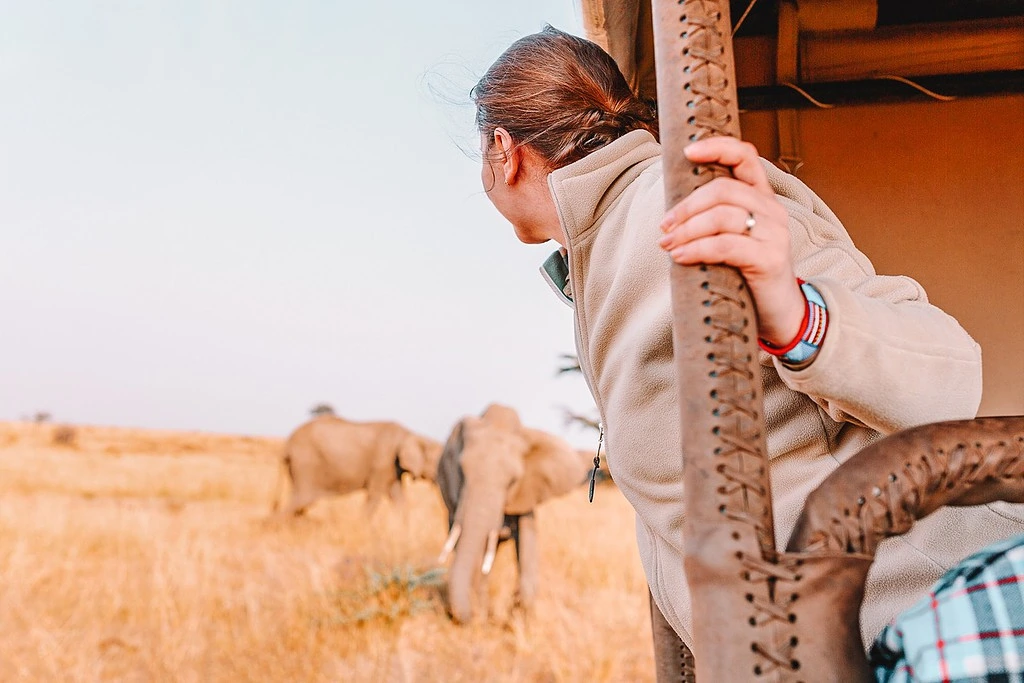
Disclaimer
This guide is here to raise awareness about animal welfare in tourism. The information is based on reports from trusted sources, including World Animal Protection, but please note that practices can vary. Always check specific places and make choices that feel right to you.
- Animal Tourism: 100 Animal-Abusive Attractions to Avoid
- 1. Elephant Rides and Trekking
- 2. Elephant Shows and Performances
- 3. Dolphin and Orca Shows
- 4. Swim-with-Dolphin Programs
- 5. Big Cat Petting and Selfies
- 6. Canned Lion Hunting
- 7. Bear Dancing and Performances
- 8. Monkey Shows and Street Performances
- 9. Horse-Drawn Carriages in Urban Areas
- 10. Donkey Rides in Tourist Destinations
- 11. Bullfighting
- 12. Running of the Bulls and Bull Runs
- 13. Animal Fighting (Dog Fighting, Cockfighting)
- 14. Crocodile Farms and Shows
- 15. Snake Charming
- 16. Alligator Wrestling Shows
- 17. Dog Sledding (in Poor Conditions)
- 18. Greyhound and Horse Racing
- 19. Animal Cafes with Exotic Animals
- 20. Circuses with Wild Animals
- 21. Roadside Zoos and Unlicensed Wildlife Parks
- 22. Petting Zoos with Exotic Animals
- 23. Camel Rides and Camel Races
- 24. Illegal Wildlife Races
- 25. Deer Feeding Parks
- 26. Interactive Aquariums and Touch Tanks
- 27. Penguin Marches and Parades in Captivity
- 28. Falconry Shows with Tethered Birds
- 29. Bird Shows and Parrot Selfies
- 30. Desert Animal Treks (with Horses, Donkeys, Camels)
- 31. Small Aquariums with Confined Marine Animals
- 32. Animal Breeding for Entertainment
- 33. Penguin Encounters and Feeding
- 34. Reptile Petting and Handling Shows
- 35. Fishing Ponds with Catch-and-Release
- 36. Fishing Competitions with High Mortality Rates
- 37. Animal Beauty Pageants and Competitions
- 38. Wildlife Markets and Animal Souvenirs
- 39. Underwater Animal Parks with Enclosures
- 40. Mobile Petting Zoos at Fairs and Events
- 41. Lion and Tiger Walks for Tourists
- 42. Farm Animal Attractions with Intensive Handling
- 43. Shark Cage Diving with Attractants
- 44. Exotic Animal Farms for Tourism
- 45. Baited Animal Photography
- 46. Animal Encounters in Shopping Malls
- 47. Public Events with Animal Mascots
- 48. Falcon and Eagle Hunting Shows
- 49. Zipline Tours through Animal Habitats
- 50. Interactive Sloth Experiences
- 51. Inadequate Sea Turtle Hatcheries for Tourism
- 52. Caged Animals on Display at Resorts
- 53. Underground Wildlife Auctions
- 54. Horse Tripping in Rodeos
- 55. Porpoise and Small Cetacean Shows
- 56. Mini Pigs and Teacup Pets as Props
- 57. Squirrel and Small Mammal Selfies
- 58. Lemur and Small Primate Interactions
- 59. Live Animal Shooting Ranges
- 60. Animal Rescue Centers with Bad Practices
- 61. Dog Pageants with Excessive Grooming
- 62. Hedgehog and Small Animal Cafes
- 63. Polar Bear and Arctic Animals in Hot Climates
- 64. Large Cat Breeding for Tourism
- 65. Hunting “Preserves” with Caged Wildlife
- 66. Scorpion and Tarantula Handling for Photos
- 67. Whale Shark Feeding Experiences
- 68. Manta Ray Feeding Experiences
- 69. Artificial Bird Migration Sites for Tourism
- 70. Reindeer Rides and Petting at Holiday Events
- 71. Artificial Fish Ponds with Confinement
- 72. Night Safari Tours with Bright Lights
- 73. Animal Swim Pools with Enclosures
- 74. Alpaca and Llama Petting Zoos
- 75. Deer “Safari” Tours with Feeding
- 76. Butterfly Houses with Poor Ventilation
- 77. Pigeon Racing
- 78. Owl Petting and Displays
- 79. Mock Rodeos with Small Calves
- 80. Pet Adoption Events with Unsafe Practices
- 81. Hunting Competitions for Small Game
- 82. Snake Handling in Rural Festivals
- 83. Interactive Turtle Pools at Resorts
- 84. Coral Reef “Touch and Hold” Sessions
- 85. Penguin and Seal Selfies on Beaches
- 86. Bison or Buffalo Petting Ranches
- 87. Mini Donkey and Small Equine Rides
- 88. Petting Baby Animals at Seasonal Farms
- 89. Handling of Armadillos, Raccoons, and Other Wildlife
- 90. Live Animal Feeding Shows (Carnivores)
- 91. Exotic Animal Rentals for Private Events
- 92. Exotic Bird and Parrot Performances
- 93. Interactive Shark and Stingray Encounters in Pools
- 94. Large Bird Aviaries with Close Interactions
- 95. Mountain Goat and Sheep Petting Zoos
- 96. Fox Farms for Petting and Photos
- 97. Peacock and Large Bird Selfies
- 98. Pony Rides at Festivals and Fairs
- 99. Dolphin Feeding at Theme Parks
- 100. Shooting Ranges with Exotic Birds as Targets
- Animal Tourism: 100 Ethical Attractions & Examples
- 1. Elephant Sanctuaries (with No-Ride Policies)
- 2. Whale and Dolphin Watching Tours (Non-Intrusive, Respectful Distances)
- 3. Wildlife Safaris in National Parks (With Ethical, Regulated Practices)
- 4. Wildlife Conservation and Rescue Centers (Rehabilitation and Release Focused)
- 5. Bird-Watching Tours
- 6. Sea Turtle Nesting and Hatching Programs (In Natural Habitats)
- 7. Animal-Assisted Therapy Programs (Sanctioned and Supervised)
- 8. Eco-Friendly Wildlife Cruises
- 9. Penguin Watching (With No Physical Contact)
- 10. Botanical Gardens and Arboretums with Conservation Focus
- 11. Eco-Tourism in Protected Wildlife Reserves
- 12. Marine Conservation Volunteering (With Accredited Organizations)
- 13. Scuba Diving and Snorkeling in Marine Reserves
- 14. Horseback Riding with Ethical, Well-Cared-For Horses
- 15. Observing Animals in Biosphere Reserves (With Licensed Guides)
- 16. Visiting Animal Rehabilitation Centers for Educational Purposes
- 17. Guided Hiking and Nature Walks in Protected Areas
- 18. Night Safaris in Certified Eco-Reserves (Minimal Light Disturbance)
- 19. Natural History Museums and Aquariums (Accredited with Ethical Standards)
- 20. Kayaking and Canoeing in Wildlife Habitats (With Respectful Distances)
- 21. Butterfly Gardens Focused on Conservation and Education
- 22. Community-Based Eco-Tourism Programs Supporting Local Wildlife
- 23. Guided Tours of Marine Sanctuaries and Conservation Zones
- 24. Stargazing and Nature Observation in Remote Parks
- 25. Responsible Dog Sledding (With Ethical Operators)
- 26. Coral Reef Snorkeling with Conservation-Focused Operators
- 27. Visiting Conservation-Driven Wildlife Exhibits
- 28. Non-Contact Wildlife Photography Expeditions
- 29. Dolphin and Whale Conservation Projects
- 30. Self-Guided Forest Bathing in Nature Reserves
- 31. Educational Lectures or Workshops on Local Wildlife
- 32. Manta Ray Viewing Experiences (Non-Feeding Policies)
- 33. Eco-Lodges with Native Wildlife Viewing Areas
- 34. Nature Conservation Centers for Endangered Species
- 35. Hiking Through Protected Forests (Following Designated Paths)
- 36. Giraffe and Large Mammal Observation in Protected Areas
- 37. Community-Led Guided Tours in Protected Indigenous Lands
- 38. Snorkeling in No-Touch Coral Reefs
- 39. Cultural Tours that Include Indigenous Knowledge of Wildlife
- 40. National Park and Forest Camping with Ethical Wildlife Policies
- 41. Beach Clean-Up Volunteering (Helping Local Marine Life)
- 42. Bird Photography in Nature Preserves
- 43. Wilderness Tracking with Guides (No Physical Contact)
- 44. Participation in Wildlife Preservation Fundraisers
- 45. Adopt-an-Animal Programs from Reputable Sanctuaries
- 46. Touring Natural Wetlands for Bird and Wildlife Observation
- 47. Underwater Photography Tours in Eco-Reserves
- 48. Forest and Mountain Ranger-Guided Tours
- 49. Orangutan Rehabilitation Center Visits (With No Direct Contact)
- 50. Cave Exploration in Protected Bat Habitats (Minimal Disturbance)
- 51. Visits to Ethical Beekeeping and Pollinator Habitats
- 52. Outdoor Educational Programs on Local Ecosystems
- 53. Research Volunteering in Accredited Wildlife Centers
- 54. Conservation Talks and Guided Walks by Wildlife Experts
- 55. Alpaca and Llama Farms with Strict Welfare Policies
- 56. Trekking in Wildlife Preserves (Non-Disruptive Routes)
- 57. Visiting Fish Hatcheries Focused on Restoration Projects
- 58. Biodiversity Tours with Conservation-Driven Operators
- 59. Non-Contact Marine Life Encounters (Viewing Only)
- 60. Wilderness and Marine Conservation Photography Tours
- 61. Exploring Protected Wetlands for Educational Purposes
- 62. Canoe Tours with Local Wildlife Spotting
- 63. Gorilla Trekking in Ethical, Regulated Groups (Distance Maintained)
- 64. Mangrove Forest Exploration (With Conservation Focus)
- 65. Experiencing Indigenous-Led Wildlife Protection Programs
- 66. Coral Restoration Volunteering with Licensed Groups
- 67. Attending Local Wildlife and Conservation Festivals
- 68. Nature Preserves with Educational Interpretive Centers
- 69. Panda Conservation Centers with Ethical Standards
- 70. Mountain and Desert Wildlife Tracking (No Contact)
- 71. Sea Otter and Marine Mammal Observation in Protected Areas
- 72. Touring Organic Farms with Wildlife-Friendly Practices
- 73. Forest Walks in Conservation Areas (Following Leave No Trace Principles)
- 74. Joining Nature Clubs and Biodiversity Networks
- 75. Rescue Center Volunteering (With Ethical Standards)
- 76. Learning from Local Animal Trackers (Respectful Distance Maintained)
- 77. Visiting Accredited Animal Sanctuaries (Focused on Non-Interference)
- 78. Participating in Wildlife Advocacy and Education Workshops
- 79. Biodiversity Walks with Local Conservation Guides
- 80. Underwater Exploration with Conservation-Focused Diving Schools
- 81. Observing Seasonal Animal Migrations from Distance (No Interference)
- 82. Forest Canopy Tours Focused on Wildlife Awareness
- 83. River Rafting Tours with Local Ecosystem Education
- 84. Marine Life Observation with Ethical Wildlife Viewing Standards
- 85. Eco-Cruises with Conservation-Focused Itineraries
- 86. Photography Tours in Protected Wildlife Habitats
- 87. Mangrove Kayak Tours with Environmental Awareness
- 88. Wildlife Film Screenings at Nature Reserves
- 89. Exploring Tide Pools in Protected Marine Parks
- 90. Night Sky Observation in Eco-Friendly Nature Parks
- 91. Learning About Indigenous Animal Lore in Local Communities
- 92. Camping in No-Trace Sites with Respect for Local Wildlife
- 93. Wildlife Tracking and Observation with Licensed Experts
- 94. Diving in Marine Sanctuaries with Licensed Guides
- 95. Whale Watching in Non-Invasive Settings
- 96. Wildlife Photography in Certified Nature Parks
- 97. Hiking with Local Guides Focused on Conservation Awareness
- 98. National Park Volunteering Programs
- 99. Visiting Wolf and Predator Conservation Centers
- 100. Respectful Sea Bird Watching at Coastal Preserves
- Frequently Asked Questions (FAQs)
- Your Choice
Animal Tourism: 100 Animal-Abusive Attractions to Avoid
Here are 100 different types of unethical animal tourism activities.
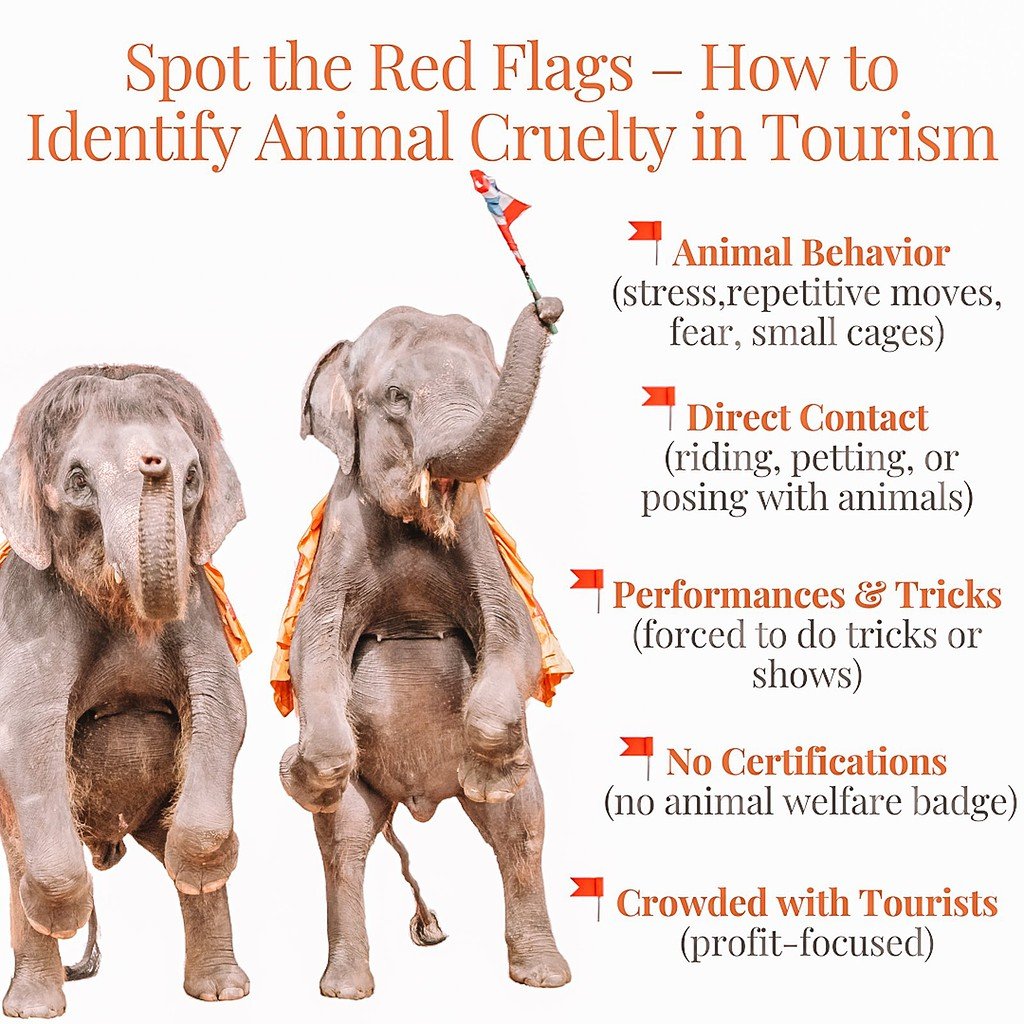
1. Elephant Rides and Trekking
Why It’s Harmful: Elephants aren’t designed to carry heavy loads on their backs. Most elephants in these tourist attractions are subjected to painful training methods to make them “obedient.” They’re often chained when not working and rarely get to rest.
2. Elephant Shows and Performances
Why It’s Harmful: Standing on two legs, painting, or “dancing” aren’t natural for elephants. They’re usually trained through fear-based methods and kept in small enclosures away from their social groups.
3. Dolphin and Orca Shows
Why It’s Harmful: Performing tricks for food rewards causes stress and even mental health issues in these intelligent beings, putting them at risk of serious long-term harm.
4. Swim-with-Dolphin Programs
Why It’s Harmful: Constantly interacting with humans stresses dolphins. Plus some dolphins in these programs are caught from the wild, separated from their families, or bred in captivity. Activities like these are far from responsible tourism.
5. Big Cat Petting and Selfies
Why It’s Harmful: Tigers, lions, and other big cats aren’t meant to be interacted with by humans. Many facilities sedate these animals to make them “safe” for petting and some even breed them to be used as tourist props.
6. Canned Lion Hunting
Why It’s Harmful: Lions are bred to be hunted in small spaces with no escape. They’re often bred in captivity and get used to humans so they’re easy targets.
7. Bear Dancing and Performances
Why It’s Harmful: Bears forced to “dance” or perform tricks are subjected to harsh training methods, often involving pain and fear. They’re kept in small, uncomfortable enclosures and rarely get to behave naturally.
8. Monkey Shows and Street Performances
Why It’s Harmful: Monkeys are social animals. Forcing them into street performances is cruel as they’re often kept on short chains and trained through fear to perform for crowds.
9. Horse-Drawn Carriages in Urban Areas
Why It’s Harmful: Horses pulling carriages in urban areas are exposed to extreme weather and traffic, causing them stress, exhaustion, and sometimes injury.
10. Donkey Rides in Tourist Destinations
Why It’s Harmful: Donkeys carrying tourists up steep paths are overworked, with little access to shade, rest, or water. They can suffer from back injuries and exhaustion.
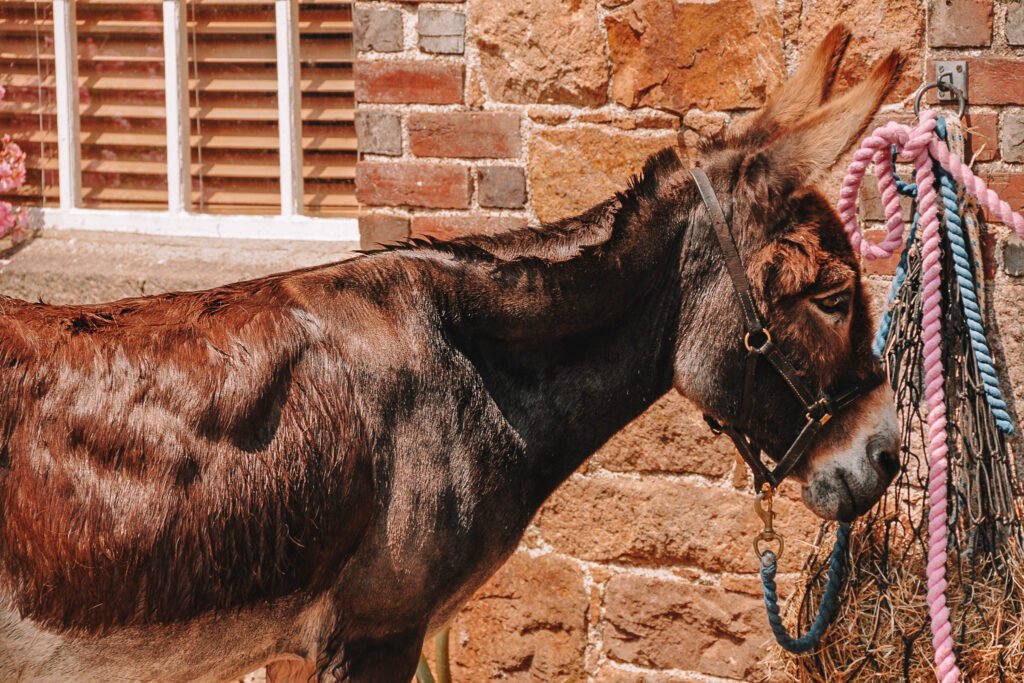
11. Bullfighting
Why It’s Harmful: Bullfighting is a violent practice where bulls are injured and killed for entertainment. Bulls suffer extreme stress and pain during these events.
12. Running of the Bulls and Bull Runs
Why It’s Harmful: Bulls are forced to run through crowded streets at these tourist attractions, often slipping and getting injured. They’re confused, stressed, and scared by the crowds.
13. Animal Fighting (Dog Fighting, Cockfighting)
Why It’s Harmful: These cruel “sports” involve animals fighting to death or severe injury, often encouraged by their handlers. The animals are subjected to painful training and injuries.
14. Crocodile Farms and Shows
Why It’s Harmful: Crocodiles are kept in small enclosures with limited water and forced into shows where they’re poked or taunted to react. Conditions are stressful and unnatural.
15. Snake Charming
Why It’s Harmful: Snakes used in charming acts are often defanged or have their mouths sewn shut. They’re kept in small baskets, deprived of food and water, and stressed from constant handling.
16. Alligator Wrestling Shows
Why It’s Harmful: Alligators are handled roughly, often tied up or wrestled in ways that are stressful and dangerous. These animal shows create an unnatural environment and high stress for the animals.
17. Dog Sledding (in Poor Conditions)
Why It’s Harmful: While some sledding operations look after their dogs, others overwork and underfeed them. Dogs are sometimes chained outside in freezing conditions when not working.
18. Greyhound and Horse Racing
Why It’s Harmful: Racing animals are pushed beyond their limits, putting them at serious risk of injuries and stress. Once they’re no longer profitable, many are abandoned or euthanized.
19. Animal Cafes with Exotic Animals
Why It’s Harmful: Animals in cafes, like owls, are handled by strangers all the time. These environments lack proper animal welfare standards and cause stress and health issues.
20. Circuses with Wild Animals
Why It’s Harmful: Circus animals are trained through fear and kept in small, traveling enclosures. They perform tricks that go against their natural instincts.
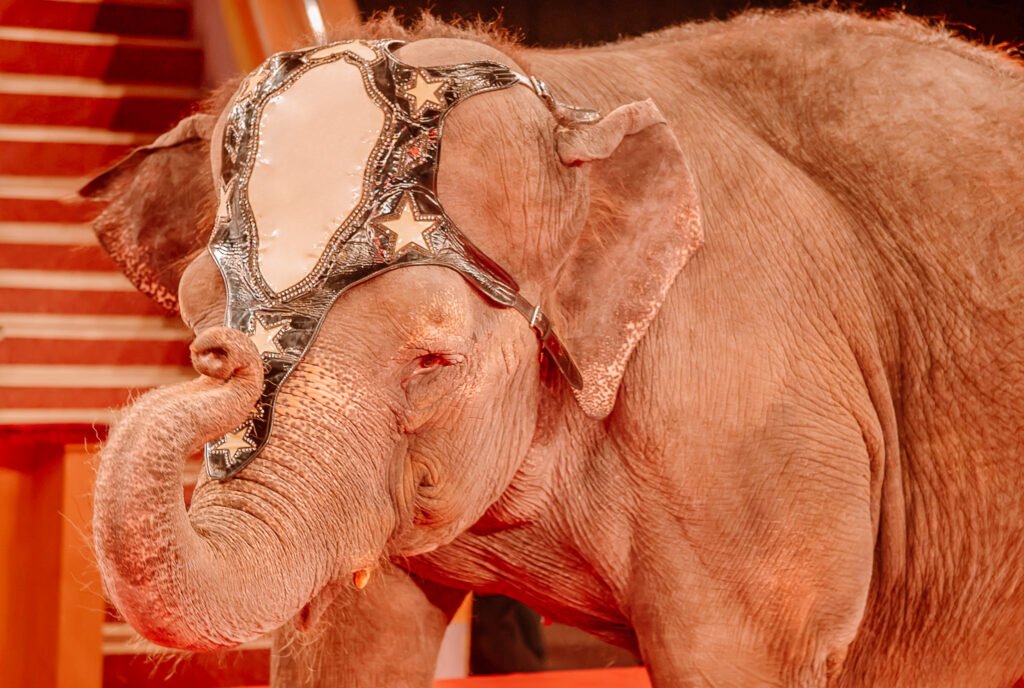
21. Roadside Zoos and Unlicensed Wildlife Parks
Why It’s Harmful: These places are often unregulated, so animals are kept in small cages with poor conditions. Wildlife parks like these expose animals to stressful environments and sometimes neglect.
22. Petting Zoos with Exotic Animals
Why It’s Harmful: Exotic animals aren’t meant to be petted by the public. Constant handling stresses them out, and they’re often kept in small enclosures without proper care—far from the natural environments found in conservation parks.
23. Camel Rides and Camel Races
Why It’s Harmful: Camels are kept in the sun for long hours, often with heavy loads and minimal breaks. In racing, they’re sometimes whipped and pushed to exhaustion.
24. Illegal Wildlife Races
Why It’s Harmful: Animals like dogs or even horses are raced in unsanctioned conditions, with minimal care and unsafe tracks, resulting in many injuries.
25. Deer Feeding Parks
Why It’s Harmful: Feeding deer disrupts their natural behavior and diet and makes them dependent on humans. They can become aggressive if they don’t get food.
26. Interactive Aquariums and Touch Tanks
Why It’s Harmful: Marine animals like rays and small sharks are forced to interact with humans all the time, causing stress and often shortening their lives.
27. Penguin Marches and Parades in Captivity
Why It’s Harmful: Penguins paraded around in unnatural environments are stressed and exposed to crowds which can cause health problems.
28. Falconry Shows with Tethered Birds
Why It’s Harmful: Birds of prey are often tethered or kept in small enclosures at these tourist attractions, restricting their ability to fly and behave naturally.
29. Bird Shows and Parrot Selfies
Why It’s Harmful: Parrots and other birds are handled all the time and deprived of flight. Some are kept in tiny cages for “photo opportunities” which causes health issues.
30. Desert Animal Treks (with Horses, Donkeys, Camels)
Why It’s Harmful: These captive animals are kept in extreme heat with minimal shade, carrying tourists on long treks with little water and no breaks.
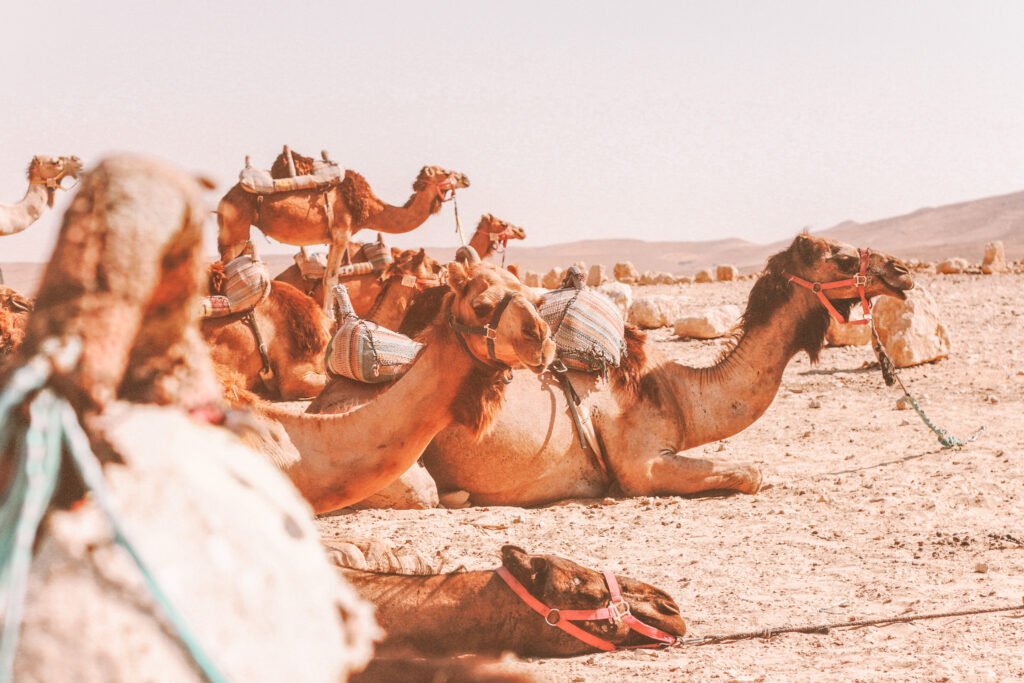
31. Small Aquariums with Confined Marine Animals
Why It’s Harmful: Confined tanks prevent marine animals from swimming naturally which causes stress and often shortens their lives.
32. Animal Breeding for Entertainment
Why It’s Harmful: Animals are bred in captivity for entertainment purposes like petting or shows. They rarely get proper care and never get to live naturally.
33. Penguin Encounters and Feeding
Why It’s Harmful: Penguins are exposed to humans all the time which causes stress and unnatural feeding habits.
34. Reptile Petting and Handling Shows
Why It’s Harmful: Reptiles don’t like to be handled frequently and it causes stress and health issues. They’re often declawed or defanged to make them “safe” for tourists.
35. Fishing Ponds with Catch-and-Release
Why It’s Harmful: Fish are stressed every time they’re caught and released and often get injured or even die due to poor handling.
36. Fishing Competitions with High Mortality Rates
Why It’s Harmful: Many fish don’t survive catch-and-release in competitive events, causing high mortality and disrupting local ecosystems.
37. Animal Beauty Pageants and Competitions
Why It’s Harmful: Animals are groomed and dressed in ways that are uncomfortable. The competition stresses them and some owners prioritize looks over health.
38. Wildlife Markets and Animal Souvenirs
Why It’s Harmful: Animals in wildlife markets are kept in cramped and unsanitary conditions. Some are even sold as souvenirs which disrupts wildlife populations.
39. Underwater Animal Parks with Enclosures
Why It’s Harmful: Marine animals are kept in underwater enclosures which prevents them from living naturally and causes stress.
40. Mobile Petting Zoos at Fairs and Events
Why It’s Harmful: Animals in mobile petting zoos are on the move all the time, handled frequently, and exposed to loud and crowded environments, leading to high stress and animal suffering.
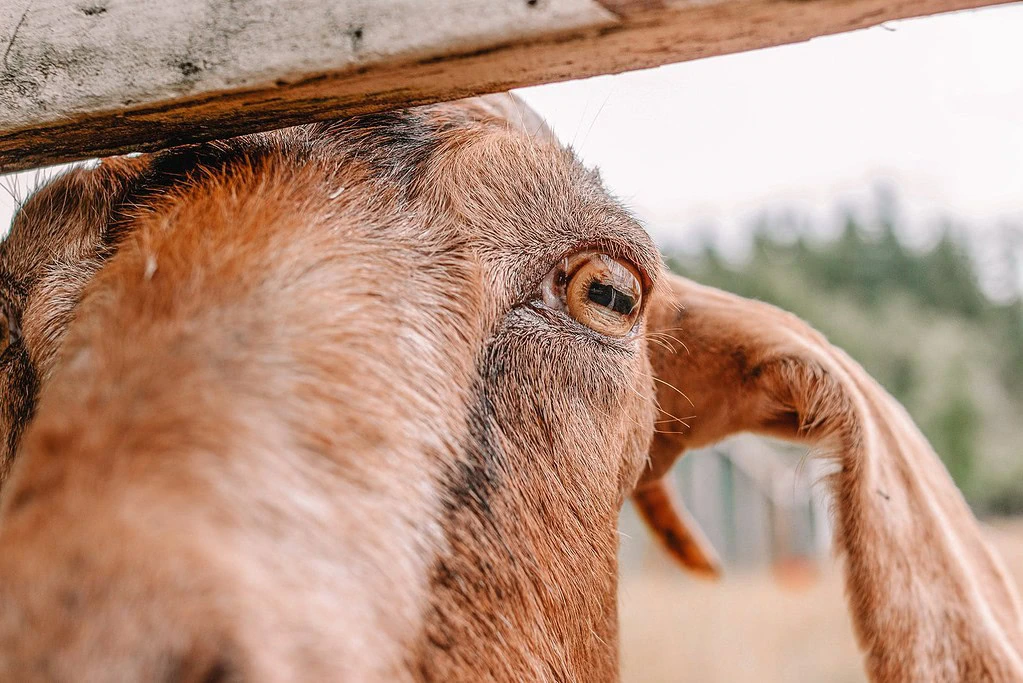
41. Lion and Tiger Walks for Tourists
Why It’s Harmful: Big cats are not domesticated and can feel threatened or stressed when close to humans. They’re often raised in captivity and trained through harsh methods to tolerate human interaction.
42. Farm Animal Attractions with Intensive Handling
Why It’s Harmful: Farm animals are handled excessively in these animal tourism experiences, sometimes roughly, which causes stress and deprives them of natural behavior.
43. Shark Cage Diving with Attractants
Why It’s Harmful: Sharks are attracted to cages by food which can alter their natural behavior and create dependency on human food sources.
44. Exotic Animal Farms for Tourism
Why It’s Harmful: Animals like foxes, raccoons, and lemurs are kept for tourists to pet and interact with. These animals are stressed from constant handling and often inadequate enclosures.
45. Baited Animal Photography
Why It’s Harmful: Wild animals are baited with food or restrained to allow tourists to take photos which disrupts their natural feeding habits and often creates dependency.
46. Animal Encounters in Shopping Malls
Why It’s Harmful: Animals are kept in small artificial environments in busy shopping malls which are noisy, stressful, and unsuitable for their needs.
47. Public Events with Animal Mascots
Why It’s Harmful: Animals are dressed up or forced to be in public events, exposed to crowds, loud noises, and handling which is highly stressful for them.
48. Falcon and Eagle Hunting Shows
Why It’s Harmful: Falcons and eagles are forced to hunt for entertainment. They’re kept in captivity and trained through restrictive methods which disrupts their natural behavior.
49. Zipline Tours through Animal Habitats
Why It’s Harmful: Ziplines and other human activities disrupt wildlife habitats which often causes animals to avoid these areas which can impact their feeding and social behavior.
50. Interactive Sloth Experiences
Why It’s Harmful: Sloths are sensitive and slow-moving animals which are easily stressed by handling. They’re often removed from the wild to meet tourist demand.
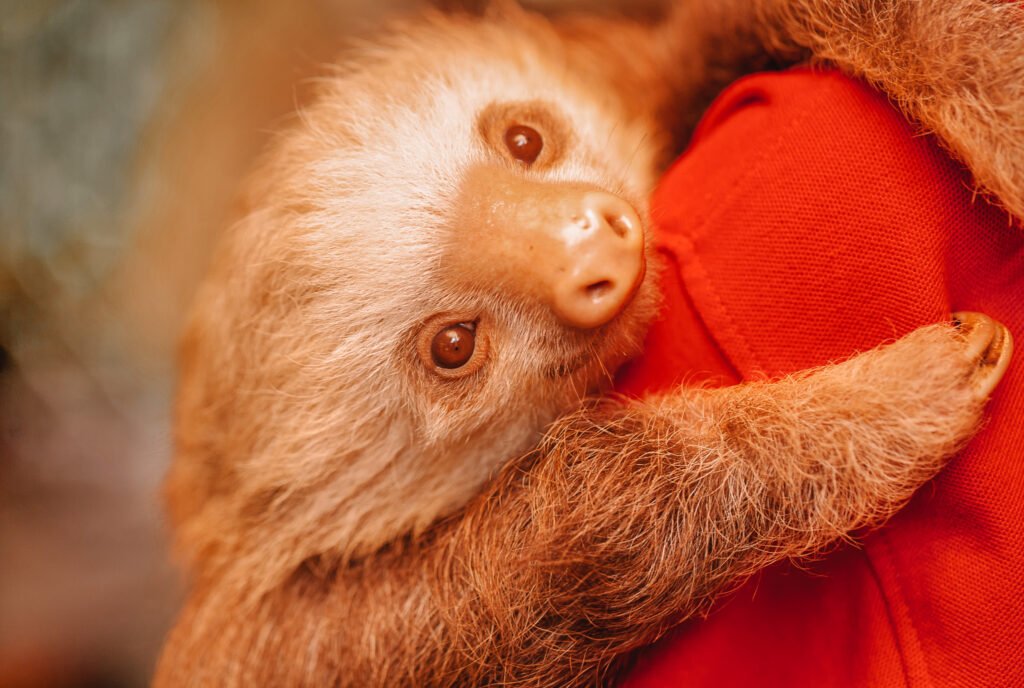
51. Inadequate Sea Turtle Hatcheries for Tourism
Why It’s Harmful: Some hatcheries put tourist interaction above turtle welfare, handle baby turtles too much, and don’t release them in their natural habitat.
52. Caged Animals on Display at Resorts
Why It’s Harmful: Animals in tiny cages at resorts as “decoration” are stressed and confined, often not cared for properly.
53. Underground Wildlife Auctions
Why It’s Harmful: Animals are bought and sold illegally, often with no regard for their health or well-being, and end up in smuggling and mistreatment.
54. Horse Tripping in Rodeos
Why It’s Harmful: Horses are tripped for the crowd’s entertainment, causing them severe injuries and trauma. This is very painful and bad. Pure animal abuse.
55. Porpoise and Small Cetacean Shows
Why It’s Harmful: Small cetaceans like porpoises are kept in tiny tanks and trained to perform, causing stress, health problems, and shortened lifespans.
56. Mini Pigs and Teacup Pets as Props
Why It’s Harmful: Mini pigs and other “teacup” animals are bred to be small but are prone to health issues. They’re used as tourist props and handled too much.
57. Squirrel and Small Mammal Selfies
Why It’s Harmful: Squirrels and other small mammals aren’t meant to be handled by humans. They get stressed and sometimes injured from being handled too much.
58. Lemur and Small Primate Interactions
Why It’s Harmful: Lemurs and other small primates are social animals and get stressed easily. Tourist handling disrupts their natural behavior and can cause trauma.
59. Live Animal Shooting Ranges
Why It’s Harmful: Live animals are used as targets, which is very unethical and involves extreme cruelty, pain, and death for the animals.
60. Animal Rescue Centers with Bad Practices
Why It’s Harmful: Some so-called “rescue” centers exploit animals by allowing tourists to handle them too much or prioritizing profit over actual rehabilitation.
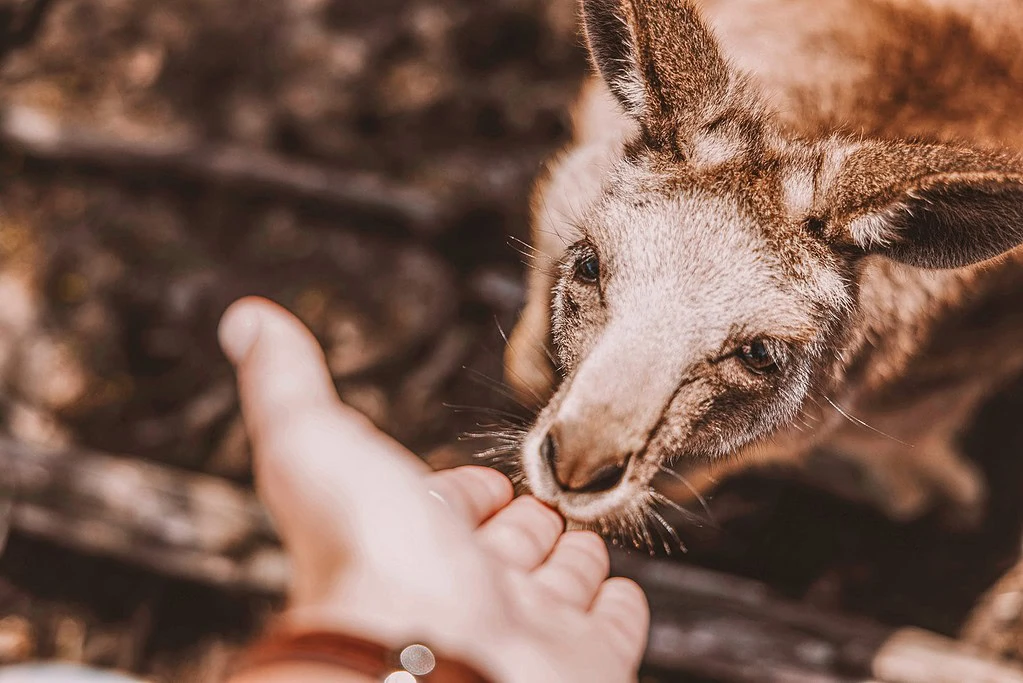
61. Dog Pageants with Excessive Grooming
Why It’s Harmful: These events often involve unnatural grooming and handling that can cause discomfort or stress to the animals. Dogs are sometimes dressed up and groomed too much for aesthetics rather than comfort.
62. Hedgehog and Small Animal Cafes
Why It’s Harmful: Small animals like hedgehogs are nocturnal and prefer quiet and low-stress environment. Frequent handling and bright lights disrupt their sleep and stress them out.
63. Polar Bear and Arctic Animals in Hot Climates
Why It’s Harmful: Polar bears and other Arctic animals aren’t adapted to warm climates. Living in hot environments causes severe stress and health problems.
64. Large Cat Breeding for Tourism
Why It’s Harmful: Big cats are bred for tourism and are often sold or used for photo ops when they’re cubs. As they grow up, many are abandoned or sold to hunting reserves.
65. Hunting “Preserves” with Caged Wildlife
Why It’s Harmful: Animals in hunting preserves have limited space to escape and are often raised to be hunted. This trophy hunting is very unethical and exploitative.
66. Scorpion and Tarantula Handling for Photos
Why It’s Harmful: These animals are often mishandled and stressed from excessive handling. Some handlers remove their venom or claws, causing more harm.
67. Whale Shark Feeding Experiences
Why It’s Harmful: Feeding whale sharks makes them dependent on humans and disrupts their natural migration.
68. Manta Ray Feeding Experiences
Why It’s Harmful: Manta rays are attracted to food handouts and rely on tourist interactions instead of foraging naturally.
69. Artificial Bird Migration Sites for Tourism
Why It’s Harmful: Birds are lured to artificial migration sites which disrupts their natural migration routes and harms local ecosystems.
70. Reindeer Rides and Petting at Holiday Events
Why It’s Harmful: Reindeer are kept in small, unnatural environments and stressed from constant handling, loud noises, and crowded holiday events.

71. Artificial Fish Ponds with Confinement
Why It’s Harmful: Fish kept in artificial ponds lack space and natural stimulation, leading to stress and health issues.
72. Night Safari Tours with Bright Lights
Why It’s Harmful: Bright lights disrupt nocturnal animals’ natural behavior and stress them out, often scaring them away from their habitat.
73. Animal Swim Pools with Enclosures
Why It’s Harmful: Animals are confined to small pools, deprived of the space they need for exercise and social interaction, leading to stress.
74. Alpaca and Llama Petting Zoos
Why It’s Harmful: Alpacas and llamas are overhandled in petting zoos, stressed, and sometimes injured.
75. Deer “Safari” Tours with Feeding
Why It’s Harmful: Feeding deer disrupts their natural diet and behavior. Deer that get used to human interaction may become aggressive.
76. Butterfly Houses with Poor Ventilation
Why It’s Harmful: Butterflies are delicate and sensitive to temperature and humidity changes. Bad ventilation and crowding stress them out and shorten their lifespan.
77. Pigeon Racing
Why It’s Harmful: Pigeons in racing events are often kept in small cages and forced to fly long distances, leading to exhaustion, injury, or even death.
78. Owl Petting and Displays
Why It’s Harmful: Owls are nocturnal and stressed by bright lights and constant handling. This disrupts their natural behavior and can cause health problems.
79. Mock Rodeos with Small Calves
Why It’s Harmful: Calves are put through stressful handling and roping which can cause injuries and trauma. Mock rodeos prioritize entertainment over animal welfare.
80. Pet Adoption Events with Unsafe Practices
Why It’s Harmful: Some adoption events allow too much handling by large crowds, which stresses the animals. Bad safety practices can cause accidents or injuries.

81. Hunting Competitions for Small Game
Why It’s Harmful: Hunting competitions overhunts small animals, disrupts ecosystems, and causes unnecessary suffering and death.
82. Snake Handling in Rural Festivals
Why It’s Harmful: Snakes are often kept in small containers, handled roughly, and sometimes defanged or declawed, leading to high stress and health issues.
83. Interactive Turtle Pools at Resorts
Why It’s Harmful: Turtles are kept in confined pools for guests to handle, causing stress, disrupted natural behaviors, and potential injuries.
84. Coral Reef “Touch and Hold” Sessions
Why It’s Harmful: Touching coral and marine life kills the coral and stresses or harms small marine animals.
85. Penguin and Seal Selfies on Beaches
Why It’s Harmful: Tourists get too close to penguins and seals for photos, scaring them and interrupting their natural behavior like feeding or resting.
86. Bison or Buffalo Petting Ranches
Why It’s Harmful: Bison and buffalo are wild animals and not meant to be petted. Confining them in small spaces for interaction stresses them and can be dangerous.
87. Mini Donkey and Small Equine Rides
Why It’s Harmful: Miniature donkeys and ponies are forced to carry children for long periods with little rest, which can cause stress and injuries.
88. Petting Baby Animals at Seasonal Farms
Why It’s Harmful: Baby animals are mishandled and overhandled, stressed and sick. Some are abandoned or sold after the season.
89. Handling of Armadillos, Raccoons, and Other Wildlife
Why It’s Harmful: These wild animals are stressed when handled and close human contact disrupts their natural behavior and exposes both animals and humans to diseases.
90. Live Animal Feeding Shows (Carnivores)
Why It’s Harmful: Live prey is released for carnivores to hunt in front of the audience, leading to stress for both the predator and the prey.
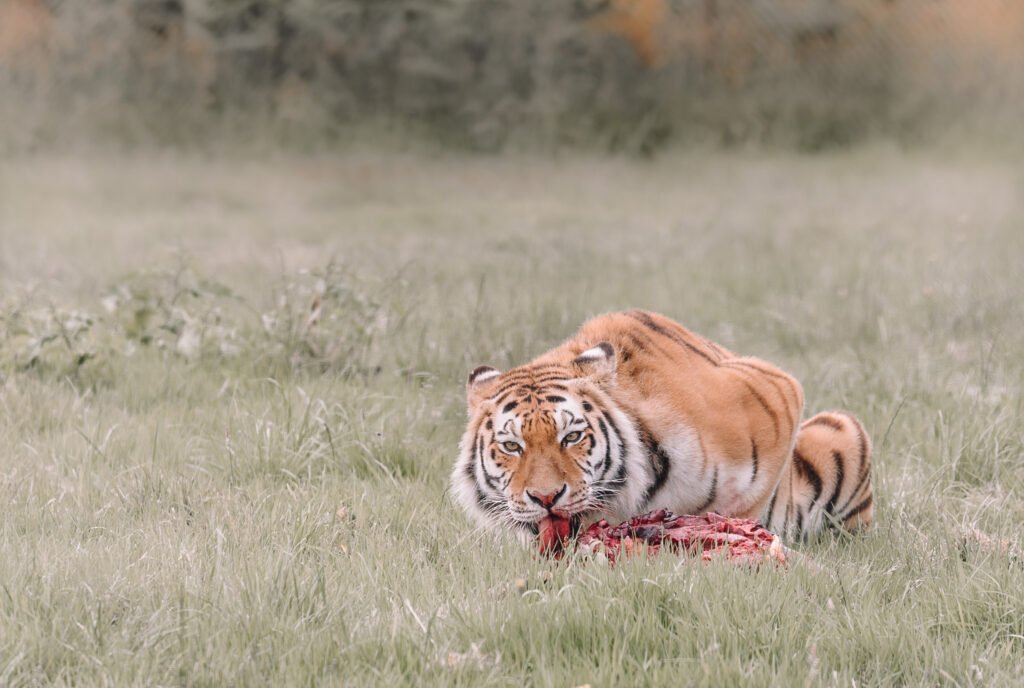
91. Exotic Animal Rentals for Private Events
Why It’s Harmful: Exotic animals are kept in bad conditions and transported frequently, stressed, injured, and exposed to unsuitable environments.
92. Exotic Bird and Parrot Performances
Why It’s Harmful: Parrots are forced to perform tricks, kept in small cages or in loud and stressful environments.
93. Interactive Shark and Stingray Encounters in Pools
Why It’s Harmful: Sharks and rays in confined pools endure stress from constant human interaction, which can lead to injury or even death due to poor handling.
94. Large Bird Aviaries with Close Interactions
Why It’s Harmful: Birds in large aviaries are handled by humans and confined in small spaces that disrupts their natural behavior and stresses them.
95. Mountain Goat and Sheep Petting Zoos
Why It’s Harmful: Goats and sheep are handled constantly in petting zoos, which can cause stress and sometimes injuries.
96. Fox Farms for Petting and Photos
Why It’s Harmful: Foxes are wild animals, naturally shy and constant handling in petting farms causes high stress and disrupts their natural behavior.
97. Peacock and Large Bird Selfies
Why It’s Harmful: Large birds like peacocks are often restrained for photos, which prevents them from behaving naturally and leads to stress.
98. Pony Rides at Festivals and Fairs
Why It’s Harmful: Ponies are overworked, carrying children for long hours with little rest, causing physical stress and exhaustion.
99. Dolphin Feeding at Theme Parks
Why It’s Harmful: Constant feeding by many tourists encourages dolphins to rely on humans for food, disrupting their natural hunting behaviors and causing stress.
100. Shooting Ranges with Exotic Birds as Targets
Why It’s Harmful: Using live birds as targets is extremely cruel, causes immense suffering and death for entertainment.

Animal Tourism: 100 Ethical Attractions & Examples
Here is a list of 100 animal friendly tourism activities.
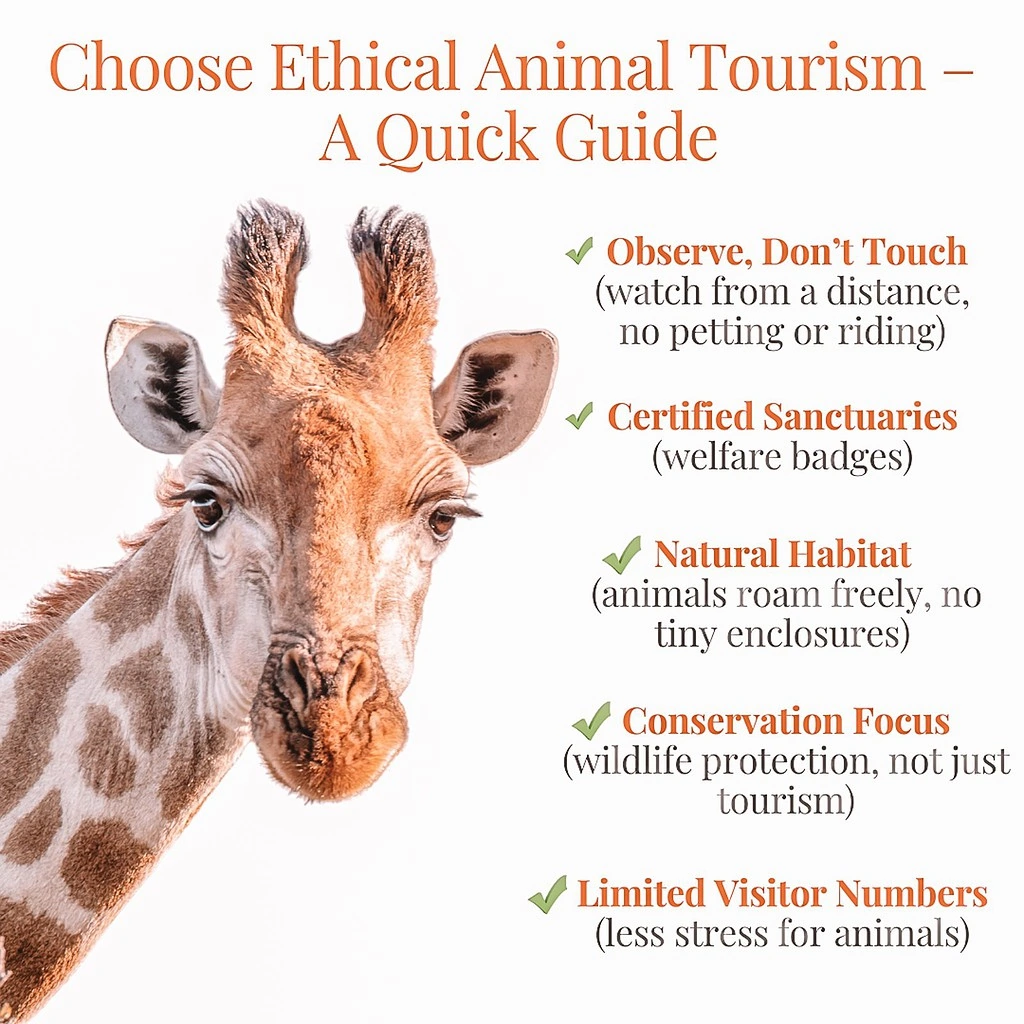
1. Elephant Sanctuaries (with No-Ride Policies)
- Why It’s Ethical: These sanctuaries focus on rescuing elephants from abusive environments, providing them with safe, natural habitats. There are no rides, performances, or tricks, allowing elephants to live naturally and interact on their terms.
- Examples: Elephant Nature Park (Thailand), Boon Lott’s Elephant Sanctuary (Thailand), and David Sheldrick Wildlife Trust (Kenya).
2. Whale and Dolphin Watching Tours (Non-Intrusive, Respectful Distances)
- Why It’s Ethical: Non-intrusive tours maintain a respectful distance from the animals, allowing them to be observed in their natural habitats without disturbance. Ethical tours use trained guides who educate tourists on marine life.
- Examples: Whale Watch Kaikoura (New Zealand), Monterey Bay Whale Watch (California, USA), and Whale Watch Western Australia.
3. Wildlife Safaris in National Parks (With Ethical, Regulated Practices)
- Why It’s Ethical: Regulated safaris ensure that wildlife remains undisturbed, following strict guidelines to protect animals and habitats. These safaris are led by licensed guides who respect animals’ natural spaces.
- Examples: Kruger National Park (South Africa), Masai Mara National Reserve (Kenya), and Yellowstone National Park (USA).
4. Wildlife Conservation and Rescue Centers (Rehabilitation and Release Focused)
- Why It’s Ethical: Conservation centers focus on rehabilitating injured or orphaned animals for release into the wild when possible. They prioritize animal welfare over tourism profits, allowing limited, non-intrusive visitor access.
- Examples: Sepilok Orangutan Rehabilitation Centre (Malaysia), Borneo Orangutan Survival Foundation (Indonesia), and The Wild Animal Sanctuary (Colorado, USA).
5. Bird-Watching Tours
- Why It’s Ethical: Bird-watching is a passive activity that requires no contact or interference with wildlife. Ethical bird-watching tours teach participants how to observe quietly and respect natural bird behaviors.
- Examples: Bird-watching tours in Mindo Cloud Forest (Ecuador), Cape May Bird Observatory (New Jersey, USA), and Isle of Mull (Scotland).
6. Sea Turtle Nesting and Hatching Programs (In Natural Habitats)
- Why It’s Ethical: These programs protect sea turtles in natural habitats, limiting human interaction and prioritizing conservation. Trained guides monitor the nests and ensure minimal disturbance during hatching events.
- Examples: Tortuguero National Park (Costa Rica), Mon Repos Conservation Park (Australia), and Ras Al Jinz Turtle Reserve (Oman).
7. Animal-Assisted Therapy Programs (Sanctioned and Supervised)
- Why It’s Ethical: Properly run animal-assisted therapy programs prioritize the welfare of the animals, ensuring they’re well-trained, healthy, and never overworked. These programs are carefully supervised by certified professionals.
- Examples: The Gentle Barn (California, USA), Green Chimneys (New York, USA), and various certified equine-assisted therapy centers worldwide.
8. Eco-Friendly Wildlife Cruises
- Why It’s Ethical: Eco-friendly cruises operate with strict environmental regulations, avoiding harmful practices like feeding or disturbing animals. They’re often partnered with conservation organizations and promote environmental education.
- Examples: G Adventures’ Amazon River Cruise (Peru), Oceanwide Expeditions in the Arctic, and Lindblad Expeditions (Global).
9. Penguin Watching (With No Physical Contact)
- Why It’s Ethical: These experiences allow visitors to observe penguins from a safe distance, respecting their natural behavior without interference. Ethical operators ensure that penguin colonies remain undisturbed.
- Examples: Phillip Island Penguin Parade (Australia), Boulder’s Beach (South Africa), and Punta Tombo Penguin Reserve (Argentina).
10. Botanical Gardens and Arboretums with Conservation Focus
- Why It’s Ethical: Botanical gardens focus on plant conservation, education, and biodiversity preservation. They provide natural habitats for some wildlife without capturing or confining animals for tourist interactions.
- Examples: Royal Botanic Gardens, Kew (UK), Kirstenbosch National Botanical Garden (South Africa), and New York Botanical Garden (USA).
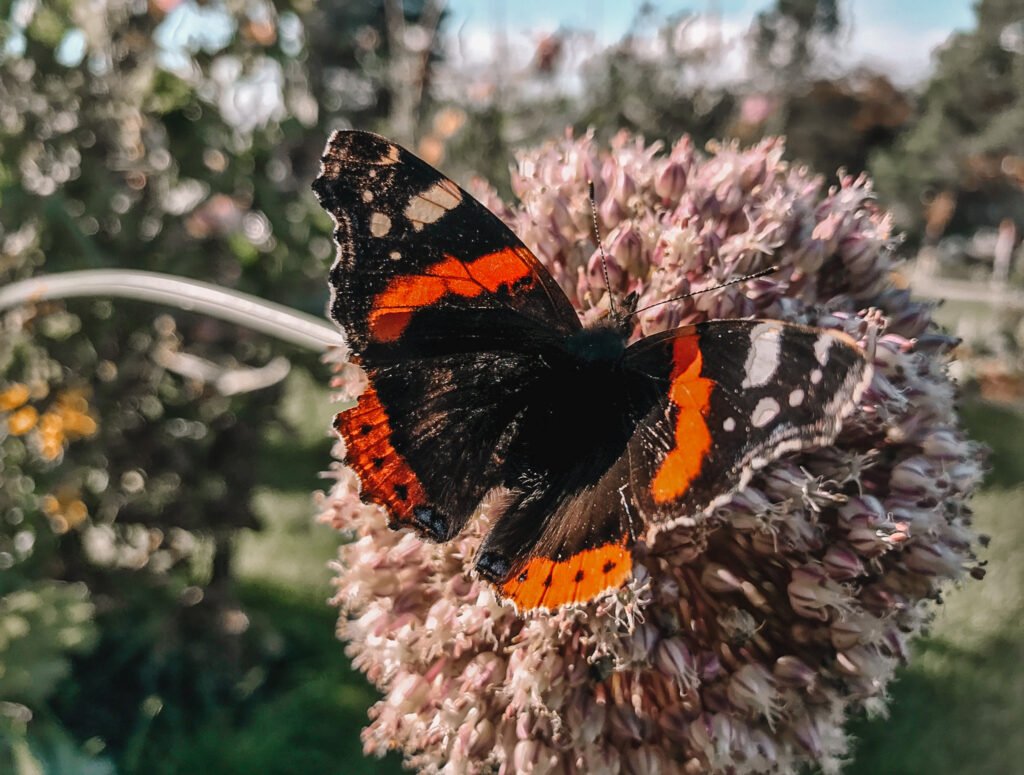
11. Eco-Tourism in Protected Wildlife Reserves
- Why It’s Ethical: Eco-tourism in reserves focuses on minimal-impact travel, conserving natural habitats while educating visitors. Licensed guides ensure tourists respect local ecosystems without disturbing wildlife.
- Examples: Corcovado National Park (Costa Rica), Manu Biosphere Reserve (Peru), and Torres del Paine National Park (Chile).
12. Marine Conservation Volunteering (With Accredited Organizations)
- Why It’s Ethical: Volunteering with conservation groups allows travelers to support marine ecosystem restoration directly. Accredited organizations prioritize genuine conservation efforts over tourist entertainment.
- Examples: Coral Restoration Foundation (Florida, USA), Marine Conservation Philippines, and Sea Shepherd Conservation Society (Global).
13. Scuba Diving and Snorkeling in Marine Reserves
- Why It’s Ethical: Diving in protected reserves allows travelers to experience marine life without disturbing it. Ethical dive operators instruct visitors not to touch coral or marine animals.
- Examples: Great Barrier Reef Marine Park (Australia), Bonaire National Marine Park (Caribbean), and Tubbataha Reefs Natural Park (Philippines).
14. Horseback Riding with Ethical, Well-Cared-For Horses
- Why It’s Ethical: Ethical horseback riding centers prioritize horse welfare, ensuring they’re well-fed, have proper shelter, and aren’t overworked. They use humane training methods and respect the animals’ needs.
- Examples: Willamette Coast Ride (Oregon, USA), Icelandic Horse World (Iceland), and Wilson’s Abel Tasman (New Zealand).
15. Observing Animals in Biosphere Reserves (With Licensed Guides)
- Why It’s Ethical: Biosphere reserves focus on conserving biodiversity. Guided tours in these areas promote respectful wildlife observation without any direct interaction or disturbance.
- Examples: Sierra Nevada de Santa Marta (Colombia), La Sepultura Biosphere Reserve (Mexico), and Uvs Nuur Basin (Mongolia).
16. Visiting Animal Rehabilitation Centers for Educational Purposes
- Why It’s Ethical: These centers rehabilitate injured or orphaned animals with the aim of releasing them back into the wild. They limit human contact, focusing on animal welfare and education.
- Examples: Centre for Orangutan Protection (Indonesia), ARCAS Wildlife Rescue (Guatemala), and Appalachian Wildlife Refuge (USA).
17. Guided Hiking and Nature Walks in Protected Areas
- Why It’s Ethical: Guided hikes in protected areas encourage respect for wildlife habitats and educate visitors on local ecology. These activities involve no animal interaction and promote Leave No Trace principles.
- Examples: Tongariro Alpine Crossing (New Zealand), Zion National Park hikes (Utah, USA), and Torres del Paine (Chile).
18. Night Safaris in Certified Eco-Reserves (Minimal Light Disturbance)
- Why It’s Ethical: Night safaris in certified reserves use minimal lighting to avoid disturbing nocturnal animals. These safaris follow strict guidelines, often led by ecologists or trained guides.
- Examples: Yala National Park (Sri Lanka), Chitwan National Park (Nepal), and Khao Sok National Park (Thailand).
19. Natural History Museums and Aquariums (Accredited with Ethical Standards)
- Why It’s Ethical: Accredited aquariums and museums prioritize conservation and education rather than entertainment. These facilities often participate in wildlife conservation programs.
- Examples: Monterey Bay Aquarium (California, USA), Vancouver Aquarium (Canada), and the Smithsonian National Museum of Natural History (Washington, D.C., USA).
20. Kayaking and Canoeing in Wildlife Habitats (With Respectful Distances)
- Why It’s Ethical: Kayaking and canoeing provide a non-intrusive way to explore natural habitats, allowing visitors to observe wildlife from a distance without disturbing their routines.
- Examples: Kayak tours in Glacier Bay (Alaska, USA), Abel Tasman National Park (New Zealand), and the Okavango Delta (Botswana).
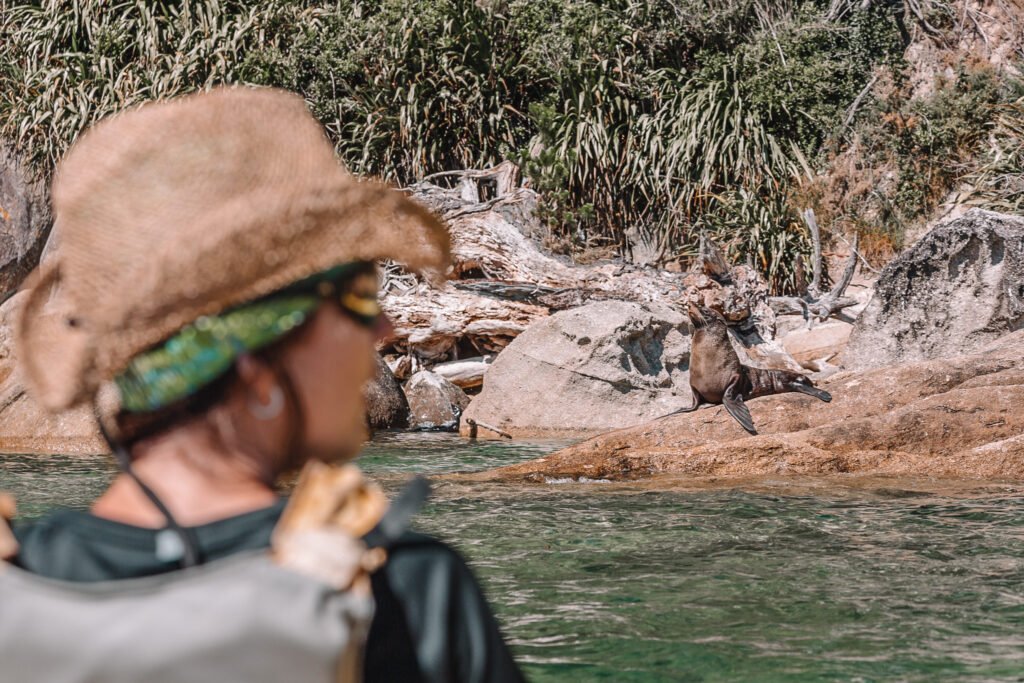
21. Butterfly Gardens Focused on Conservation and Education
- Why It’s Ethical: Ethical butterfly gardens focus on educating visitors about conservation and often play a role in supporting local butterfly populations and habitats.
- Examples: Key West Butterfly & Nature Conservatory (Florida, USA), Victoria Butterfly Gardens (Canada), and Monteverde Butterfly Garden (Costa Rica).
22. Community-Based Eco-Tourism Programs Supporting Local Wildlife
- Why It’s Ethical: Community-based eco-tourism empowers local communities to protect wildlife and natural resources while educating visitors on sustainable practices.
- Examples: Pankisi Valley Eco-tourism (Georgia), Chalalan Ecolodge (Bolivia), and Sepilok Forest Edge Resort (Malaysia).
23. Guided Tours of Marine Sanctuaries and Conservation Zones
- Why It’s Ethical: Guided tours in marine sanctuaries promote sustainable tourism, respecting marine ecosystems without touching or feeding the animals.
- Examples: Hanauma Bay Nature Preserve (Hawaii, USA), Galapagos Marine Reserve (Ecuador), and Ningaloo Reef (Australia).
24. Stargazing and Nature Observation in Remote Parks
- Why It’s Ethical: Stargazing and nature observation require no interaction with wildlife, allowing travelers to appreciate nature’s beauty without disturbing ecosystems.
- Examples: Atacama Desert (Chile), Jasper National Park Dark Sky Preserve (Canada), and Grand Canyon National Park (Arizona, USA).
25. Responsible Dog Sledding (With Ethical Operators)
- Why It’s Ethical: Responsible operators ensure dogs are well-cared-for, have sufficient breaks, and aren’t pushed beyond their limits. They focus on animal welfare and humane treatment.
- Examples: Wild Nordic Finland, Wintergreen Dogsled Lodge (Minnesota, USA), and Basecamp Spitsbergen (Norway).
26. Coral Reef Snorkeling with Conservation-Focused Operators
- Why It’s Ethical: Conservation-focused operators educate snorkelers on coral protection, instructing them not to touch reefs or disturb marine life.
- Examples: Bonaire National Marine Park (Caribbean), Misool Eco Resort (Indonesia), and Great Barrier Reef Marine Park (Australia).
27. Visiting Conservation-Driven Wildlife Exhibits
- Why It’s Ethical: These exhibits support conservation and education rather than exploiting animals. Many participate in endangered species protection.
- Examples: San Diego Zoo Safari Park (California, USA), Bronx Zoo (New York, USA), and Singapore Zoo (Singapore).
28. Non-Contact Wildlife Photography Expeditions
- Why It’s Ethical: Wildlife photography tours promote observing animals from a distance, respecting their space without any physical interaction.
- Examples: Arctic wildlife photography in Svalbard (Norway), tiger photography tours in Bandhavgarh (India), and polar bear tours in Churchill (Canada).
29. Dolphin and Whale Conservation Projects
- Why It’s Ethical: Conservation projects prioritize the health and protection of marine animals. Volunteers and many tourists learn about these animals without direct interaction.
- Examples: The Dolphin Research Center (Florida, USA), OrcaLab (British Columbia, Canada), and Whale and Dolphin Conservation (Global).
30. Self-Guided Forest Bathing in Nature Reserves
- Why It’s Ethical: Forest bathing, or “Shinrin-yoku,” involves immersing oneself in nature without disturbing wildlife, promoting a peaceful connection to the environment.
- Examples: The Black Forest (Germany), Mount Takao (Japan), and Redwood National Park (California, USA).

31. Educational Lectures or Workshops on Local Wildlife
- Why It’s Ethical: Educational programs offer insights into local wildlife and ecosystems without disturbing animals. They promote awareness and conservation, empowering travelers to make responsible choices.
- Examples: African Wildlife Foundation lectures (various locations in Africa), Wildlife Institute of India workshops, and workshops at Yellowstone National Park (USA).
32. Manta Ray Viewing Experiences (Non-Feeding Policies)
- Why It’s Ethical: Ethical manta ray experiences avoid feeding or touching, allowing travelers to watch these creatures naturally without interfering with their behavior.
- Examples: Manta Point in Nusa Penida (Indonesia), Hanifaru Bay (Maldives), and Kona Coast (Hawaii, USA).
33. Eco-Lodges with Native Wildlife Viewing Areas
- Why It’s Ethical: Eco-lodges prioritize sustainability and conservation, often providing safe vantage points for viewing wildlife without direct interaction.
- Examples: Lapa Rios Lodge (Costa Rica), Grootbos Private Nature Reserve (South Africa), and Inkaterra Machu Picchu Pueblo Hotel (Peru).
34. Nature Conservation Centers for Endangered Species
- Why It’s Ethical: Conservation centers support endangered species through protection, research, and breeding programs. They minimize human interaction to focus on animal welfare.
- Examples: Durrell Wildlife Conservation Trust (Jersey, UK), National Tiger Conservation Authority (India), and Snow Leopard Trust (Central Asia).
35. Hiking Through Protected Forests (Following Designated Paths)
- Why It’s Ethical: Hiking designated paths prevents habitat destruction and minimizes disruption to local wildlife, allowing nature lovers to enjoy forests responsibly.
- Examples: Redwood National and State Parks (California, USA), Daintree Rainforest (Australia), and The Black Forest (Germany).
36. Giraffe and Large Mammal Observation in Protected Areas
- Why It’s Ethical: Observing animals like giraffes from a respectful distance in protected parks allows them to live freely without forced interaction or unnatural confinement.
- Examples: Giraffe Manor (Kenya), Pilanesberg National Park (South Africa), and Serengeti National Park (Tanzania).
37. Community-Led Guided Tours in Protected Indigenous Lands
- Why It’s Ethical: These tours empower Indigenous communities to share their knowledge and connection to the land, promoting conservation while benefiting local people.
- Examples: San Bushmen guided tours (Botswana), Native American-led tours in Monument Valley (USA), and Quijos Valley eco-tours (Ecuador).
38. Snorkeling in No-Touch Coral Reefs
- Why It’s Ethical: Snorkeling at coral reefs that enforce no-touch policies protects fragile ecosystems while allowing visitors to enjoy underwater biodiversity respectfully.
- Examples: Hol Chan Marine Reserve (Belize), Ras Mohammed National Park (Egypt), and Apo Island (Philippines).
39. Cultural Tours that Include Indigenous Knowledge of Wildlife
- Why It’s Ethical: Indigenous-led wildlife tours honor traditional ecological knowledge, fostering respect for nature without direct animal interactions.
- Examples: Maori cultural tours (New Zealand), Sami reindeer herding tours (Norway), and Maasai Mara tours (Kenya).
40. National Park and Forest Camping with Ethical Wildlife Policies
- Why It’s Ethical: Ethical camping in national parks adheres to Leave No Trace principles, preserving natural habitats and ensuring minimal disturbance to wildlife.
- Examples: Banff National Park (Canada), Great Smoky Mountains National Park (USA), and Fiordland National Park (New Zealand).
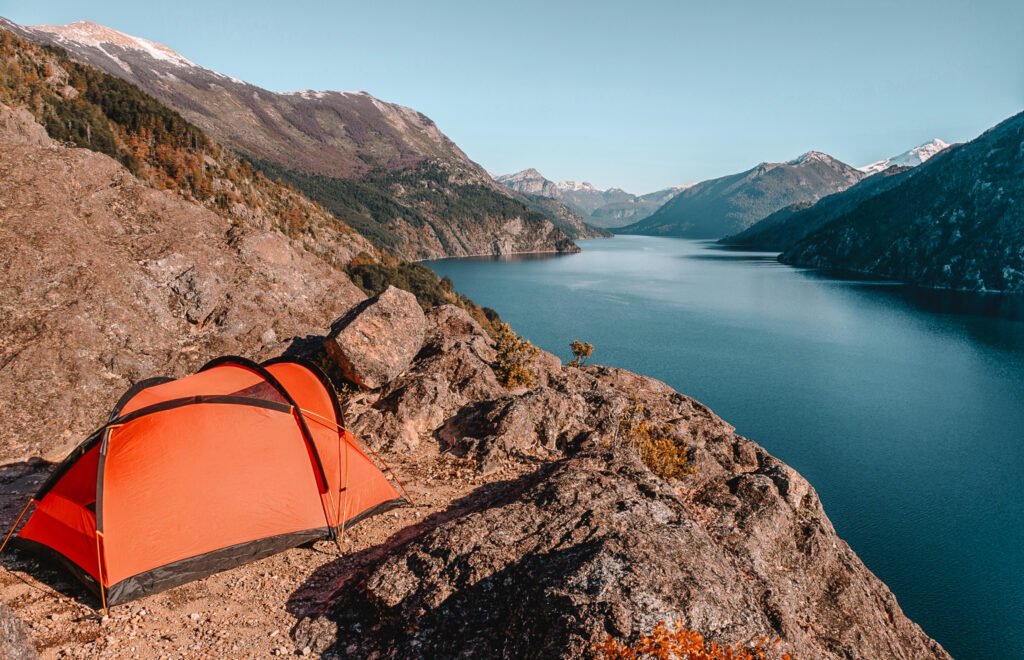
41. Beach Clean-Up Volunteering (Helping Local Marine Life)
- Why It’s Ethical: Participating in beach clean-ups helps protect marine life from plastic and debris, supporting ecosystems without interacting with animals.
- Examples: International Coastal Cleanup (Global), beach clean-ups with Surfrider Foundation (USA), and Clean Up Australia Day.
42. Bird Photography in Nature Preserves
- Why It’s Ethical: Bird photography in nature preserves respects animals’ habitats and avoids direct interaction, allowing birds to live naturally while being observed.
- Examples: Point Pelee National Park (Canada), Kakadu National Park (Australia), and Keoladeo National Park (India).
43. Wilderness Tracking with Guides (No Physical Contact)
- Why It’s Ethical: Ethical wildlife tracking maintains a safe distance and avoids disturbing animals. Licensed guides lead tracking, ensuring no interference.
- Examples: Snow leopard tracking (Hemis National Park, India), wolf tracking (Yellowstone National Park, USA), and cheetah tracking (Kidepo Valley National Park, Uganda).
44. Participation in Wildlife Preservation Fundraisers
- Why It’s Ethical: Fundraisers support conservation without direct animal contact. Donors and volunteers raise awareness and resources for critical preservation efforts.
- Examples: World Wildlife Fund fundraising events, Save the Rhino campaigns, and the David Shepherd Wildlife Foundation charity runs.
45. Adopt-an-Animal Programs from Reputable Sanctuaries
- Why It’s Ethical: Adopting an animal from a sanctuary supports their care without any direct handling. Funds go toward conservation and the animal’s needs.
- Examples: David Sheldrick Wildlife Trust’s elephant adoption (Kenya), WWF’s symbolic animal adoptions, and Jane Goodall Institute’s chimpanzee adoption.
46. Touring Natural Wetlands for Bird and Wildlife Observation
- Why It’s Ethical: Touring wetlands involves quiet observation without disturbing habitats, providing a sanctuary for migratory and native birds.
- Examples: Everglades National Park (Florida, USA), Camargue Natural Regional Park (France), and Danube Delta Biosphere Reserve (Romania).
47. Underwater Photography Tours in Eco-Reserves
- Why It’s Ethical: Underwater photography in eco-reserves respects marine life and habitats, encouraging visitors to observe from a distance without touching or feeding.
- Examples: Bonaire National Marine Park (Caribbean), Palau Rock Islands Southern Lagoon, and Galapagos Marine Reserve (Ecuador).
48. Forest and Mountain Ranger-Guided Tours
- Why It’s Ethical: Ranger-led tours educate tourists on wildlife conservation while enforcing respectful observation, leaving animals undisturbed in their habitats.
- Examples: Yosemite National Park ranger tours (California, USA), Sagarmatha National Park (Nepal), and Bwindi Impenetrable National Park (Uganda).
49. Orangutan Rehabilitation Center Visits (With No Direct Contact)
- Why It’s Ethical: Visitors learn about conservation at these centers, where rehabilitating orangutans have minimal human contact to promote their natural behaviors and potential release.
- Examples: Sepilok Orangutan Rehabilitation Centre (Malaysia), Camp Leakey (Indonesia), and Nyaru Menteng Orangutan Sanctuary (Indonesia).
50. Cave Exploration in Protected Bat Habitats (Minimal Disturbance)
- Why It’s Ethical: Ethical cave tours avoid disturbing bat colonies, using low light and respecting quiet areas to protect bats and their fragile ecosystem.
- Examples: Carlsbad Caverns (New Mexico, USA), Waitomo Caves (New Zealand), and Gomantong Caves (Malaysia).
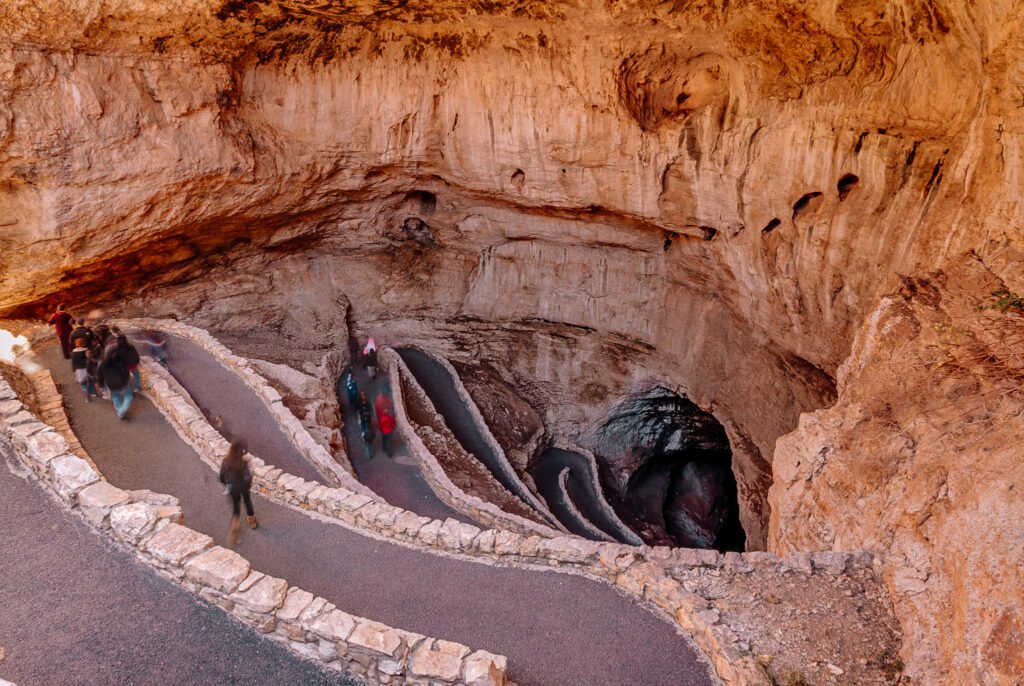
51. Visits to Ethical Beekeeping and Pollinator Habitats
- Why It’s Ethical: Ethical beekeeping tours educate visitors on the importance of bees and pollination, focusing on conservation without disturbing or harming the bees.
- Examples: The Honeybee Conservancy (New York, USA), Savannah Bee Company (Georgia, USA), and Bermondsey Street Bees (UK).
52. Outdoor Educational Programs on Local Ecosystems
- Why It’s Ethical: Outdoor programs provide an understanding of local ecosystems without animal interaction, promoting awareness and conservation.
- Examples: Denali National Park educational programs (Alaska, USA), Cradle Mountain Ecology programs (Tasmania, Australia), and Acadia National Park (Maine, USA).
53. Research Volunteering in Accredited Wildlife Centers
- Why It’s Ethical: Volunteering for research helps wildlife centers with their conservation work, focusing on supporting animal welfare and ecosystem studies without intrusive interactions.
- Examples: Cheetah Conservation Fund (Namibia), Kenya Wildlife Service, and SanWild Wildlife Sanctuary (South Africa).
54. Conservation Talks and Guided Walks by Wildlife Experts
- Why It’s Ethical: Expert-led talks and walks educate visitors on animal behavior and ecosystem conservation without direct contact, respecting wildlife habitats.
- Examples: Yellowstone Forever Institute (USA), Royal Botanic Gardens educational walks (UK), and Australian Wildlife Conservancy events.
55. Alpaca and Llama Farms with Strict Welfare Policies
- Why It’s Ethical: Ethical alpaca and llama farms prioritize animal welfare, allowing visitors to learn about these animals without unnecessary handling or stress.
- Examples: Quechua Benefit Alpaca Farm (Peru), Apple Hill Farm (North Carolina, USA), and Llama Experience (UK).
56. Trekking in Wildlife Preserves (Non-Disruptive Routes)
- Why It’s Ethical: Trekking along designated routes minimizes habitat disturbance, allowing for responsible wildlife observation from a distance.
- Examples: Torres del Paine National Park (Chile), Los Glaciares National Park (Argentina), and Glacier National Park (Montana, USA).
57. Visiting Fish Hatcheries Focused on Restoration Projects
- Why It’s Ethical: Restoration-focused hatcheries work to support wild fish populations, teaching visitors about conservation without exploiting the animals.
- Examples: Leavenworth National Fish Hatchery (Washington, USA), Hiram M. Chittenden Locks Fish Ladder (Seattle, USA), and Nimbus Fish Hatchery (California, USA).
58. Biodiversity Tours with Conservation-Driven Operators
- Why It’s Ethical: Conservation-focused tours educate travelers on local biodiversity and encourage responsible travel without direct interaction with wildlife.
- Examples: Manu Biodiversity Tours (Peru), Tierra del Fuego Nature Tours (Argentina), and Malaysian Borneo rainforest tours.
59. Non-Contact Marine Life Encounters (Viewing Only)
- Why It’s Ethical: These tours avoid feeding or touching marine animals, instead educating visitors on the natural behaviors and conservation of marine life.
- Examples: Shark viewing at Neptune Islands (Australia), Great White Shark diving (South Africa), and dolphin watching in Kaikoura (New Zealand).
60. Wilderness and Marine Conservation Photography Tours
- Why It’s Ethical: Photography tours promote observation from a distance and respect wildlife habitats, with guides who ensure ethical practices.
- Examples: Iceland photography tours, bear viewing photography (Alaska, USA), and African safaris with photography focus (Kenya, Tanzania).
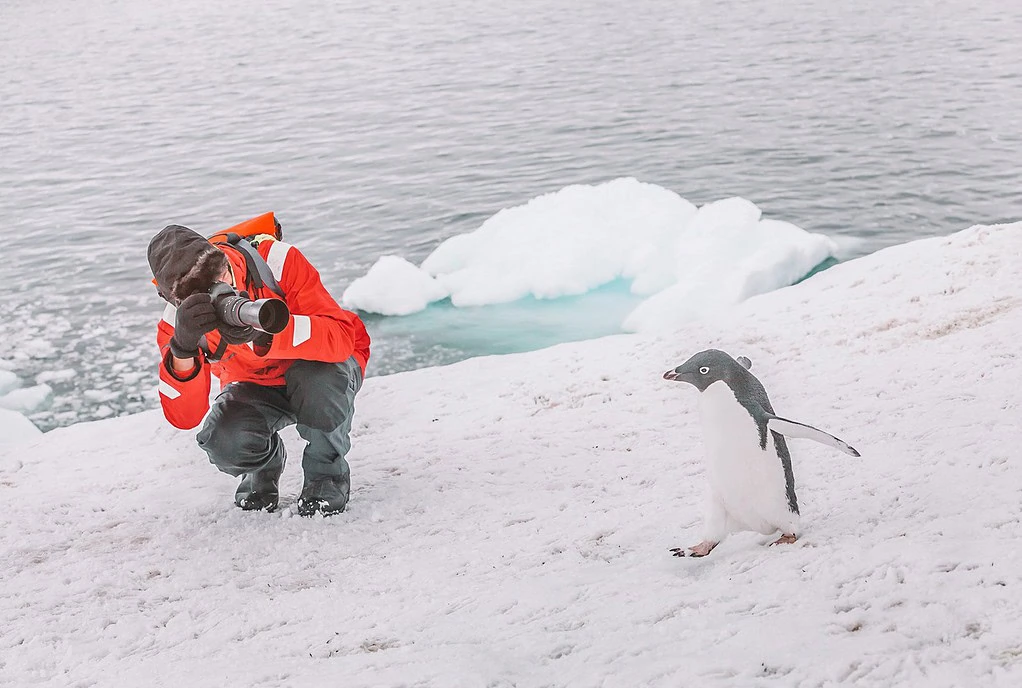
61. Exploring Protected Wetlands for Educational Purposes
- Why It’s Ethical: Wetlands visits provide education on ecosystem health and biodiversity, allowing wildlife to thrive undisturbed in their natural habitats.
- Examples: Everglades National Park (Florida, USA), Camargue Wetlands (France), and Kakadu National Park (Australia).
62. Canoe Tours with Local Wildlife Spotting
- Why It’s Ethical: Canoeing allows for quiet, non-intrusive wildlife observation without disturbing animals’ natural behavior.
- Examples: Okavango Delta canoeing (Botswana), Boundary Waters Canoe Area Wilderness (Minnesota, USA), and Haida Gwaii (Canada).
63. Gorilla Trekking in Ethical, Regulated Groups (Distance Maintained)
- Why It’s Ethical: Ethical gorilla trekking follows strict regulations to minimize impact, with guides ensuring a respectful distance from gorillas.
- Examples: Bwindi Impenetrable National Park (Uganda), Volcanoes National Park (Rwanda), and Virunga National Park (DR Congo).
64. Mangrove Forest Exploration (With Conservation Focus)
- Why It’s Ethical: Mangrove tours educate visitors on the importance of mangroves for marine ecosystems and climate change resilience, avoiding harm to the environment.
- Examples: Sundarbans Mangrove Forest (India/Bangladesh), Everglades Mangrove Tours (Florida, USA), and Daintree Mangroves (Australia).
65. Experiencing Indigenous-Led Wildlife Protection Programs
- Why It’s Ethical: Indigenous-led programs highlight traditional knowledge and wildlife protection, fostering respect for both culture and nature.
- Examples: Sami Reindeer Husbandry (Sweden), Indigenous ranger programs in Australia, and Amazonian wildlife conservation with the Yawanawa tribe (Brazil).
66. Coral Restoration Volunteering with Licensed Groups
- Why It’s Ethical: Volunteering in coral restoration directly supports marine ecosystem health without disturbing wildlife, under professional supervision.
- Examples: Coral Restoration Foundation (Florida, USA), Gili Eco Trust (Indonesia), and Reef Restoration Foundation (Australia).
67. Attending Local Wildlife and Conservation Festivals
- Why It’s Ethical: Conservation festivals promote awareness and education without disturbing wildlife, often supporting fundraising for preservation.
- Examples: Whale Festival (South Africa), Crane Festival (Nebraska, USA), and Pangolin Festival (Cameroon).
68. Nature Preserves with Educational Interpretive Centers
- Why It’s Ethical: Interpretive centers educate visitors on conservation without interaction with live animals, focusing instead on habitat preservation and awareness.
- Examples: Acadia National Park (Maine, USA), Muir Woods National Monument (California, USA), and Waterton-Glacier International Peace Park (USA/Canada).
69. Panda Conservation Centers with Ethical Standards
- Why It’s Ethical: Ethical panda centers focus on conservation, research, and education rather than tourism, ensuring pandas live naturally with limited human interaction.
- Examples: Chengdu Research Base of Giant Panda Breeding (China), Bifengxia Panda Base (China), and Gengda Wolong Panda Center (China).
70. Mountain and Desert Wildlife Tracking (No Contact)
- Why It’s Ethical: Wildlife tracking in remote areas promotes observation without physical interaction, led by guides who teach tracking and respect for wildlife habitats.
- Examples: Snow leopard tracking in the Himalayas (India/Nepal), cheetah tracking in Namibia, and ibex tracking in Morocco’s Atlas Mountains.
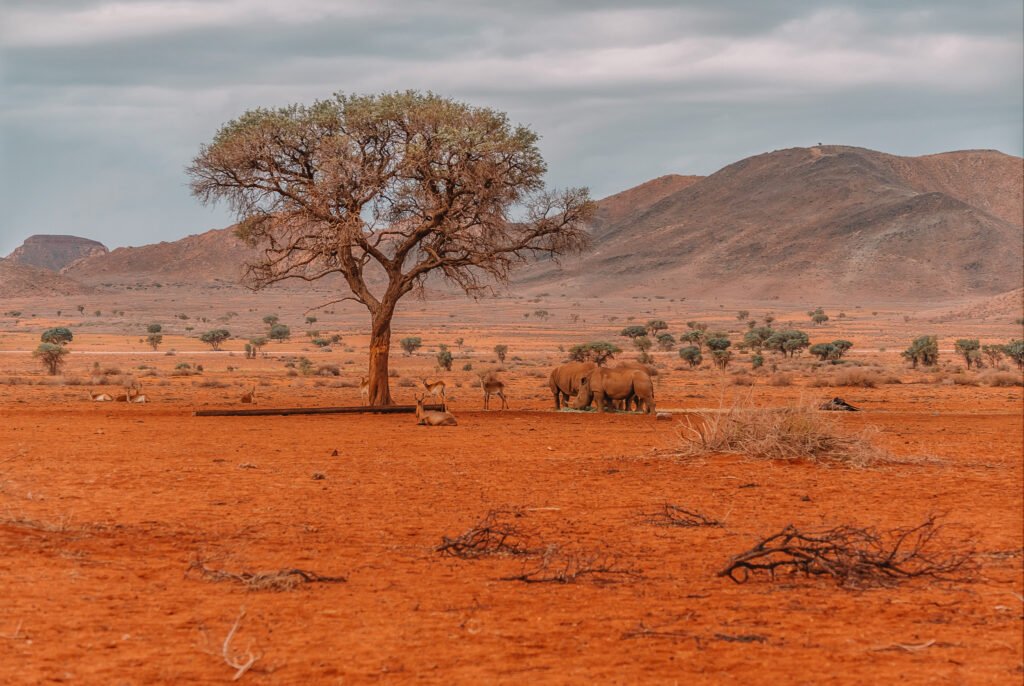
71. Sea Otter and Marine Mammal Observation in Protected Areas
- Why It’s Ethical: Observing sea otters and marine mammals from a respectful distance in protected areas helps avoid disturbing their natural behavior, supporting their habitats.
- Examples: Monterey Bay National Marine Sanctuary (California, USA), Glacier Bay (Alaska, USA), and Cape Town’s Seal Island (South Africa).
72. Touring Organic Farms with Wildlife-Friendly Practices
- Why It’s Ethical: Organic farms with wildlife-friendly practices help sustain local ecosystems by avoiding harmful chemicals and allowing natural animal interactions.
- Examples: Polyface Farm (Virginia, USA), Green Meadows Farm (UK), and Black Creek Farm (Australia).
73. Forest Walks in Conservation Areas (Following Leave No Trace Principles)
- Why It’s Ethical: Forest walks in conservation areas minimize impact by following Leave No Trace principles, helping to preserve habitats and protect wildlife.
- Examples: Olympic National Park (Washington, USA), Sinharaja Forest Reserve (Sri Lanka), and Bwindi Impenetrable Forest (Uganda).
74. Joining Nature Clubs and Biodiversity Networks
- Why It’s Ethical: Nature clubs and biodiversity networks promote conservation education and wildlife protection without any direct interaction with animals.
- Examples: National Audubon Society (USA), RSPB (Royal Society for the Protection of Birds, UK), and BirdLife International (Global).
75. Rescue Center Volunteering (With Ethical Standards)
- Why It’s Ethical: Volunteering in ethical rescue centers supports animal care and rehabilitation, focusing on health and eventual release rather than tourism.
- Examples: Born Free Foundation (UK), Big Cat Rescue (Florida, USA), and Wildlife Friends Foundation (Thailand).
76. Learning from Local Animal Trackers (Respectful Distance Maintained)
- Why It’s Ethical: Guided by local animal trackers, this activity teaches respectful observation of animals without disturbing their natural environment.
- Examples: Lion tracking with San guides (Botswana), wolf tracking (Yellowstone, USA), and leopard tracking (Sri Lanka).
77. Visiting Accredited Animal Sanctuaries (Focused on Non-Interference)
- Why It’s Ethical: Accredited sanctuaries emphasize animal welfare, providing natural environments and minimal human interaction, focusing on animal comfort.
- Examples: Best Friends Animal Sanctuary (Utah, USA), Elephant Sanctuary (Tennessee, USA), and Ape Action Africa (Cameroon).
78. Participating in Wildlife Advocacy and Education Workshops
- Why It’s Ethical: Advocacy and education workshops raise awareness and teach conservation principles without involving direct animal interaction.
- Examples: Wildlife Conservation Network (USA), International Primate Protection League (USA), and Conservation International (Global).
79. Biodiversity Walks with Local Conservation Guides
- Why It’s Ethical: Conservation guides focus on respectful, non-intrusive observation of wildlife, educating travelers on local flora and fauna.
- Examples: Rainforest Alliance tours (Costa Rica), biodiversity tours in Sinharaja Forest (Sri Lanka), and Amazonian plant walks (Peru).
80. Underwater Exploration with Conservation-Focused Diving Schools
- Why It’s Ethical: Conservation-focused diving schools teach ethical diving practices that avoid damaging coral reefs and marine ecosystems.
- Examples: PADI AWARE dive centers, Coral Gardeners program (French Polynesia), and Marine Conservation Philippines.

81. Observing Seasonal Animal Migrations from Distance (No Interference)
- Why It’s Ethical: Observing migrations from a distance minimizes interference, letting animals follow natural paths without human disruption.
- Examples: Serengeti Wildebeest Migration (Tanzania), sandhill crane migration in Nebraska (USA), and monarch butterfly migration in Mexico.
82. Forest Canopy Tours Focused on Wildlife Awareness
- Why It’s Ethical: Canopy tours allow visitors to observe wildlife in forest canopies without entering their habitats, promoting awareness without disturbance.
- Examples: Monteverde Cloud Forest canopy tours (Costa Rica), Daintree Rainforest canopy walk (Australia), and Khao Sok canopy tour (Thailand).
83. River Rafting Tours with Local Ecosystem Education
- Why It’s Ethical: Educational river rafting tours respect the ecosystem, allowing wildlife observation while avoiding direct interference.
- Examples: Grand Canyon rafting (Arizona, USA), Colorado River rafting, and Futaleufu River rafting (Chile).
84. Marine Life Observation with Ethical Wildlife Viewing Standards
- Why It’s Ethical: Marine life observation standards ensure minimal disturbance, allowing tourists to observe without feeding, touching, or intruding.
- Examples: Whale watching in Kaikoura (New Zealand), dolphin watching in Azores (Portugal), and seal watching in Monterey Bay (California, USA).
85. Eco-Cruises with Conservation-Focused Itineraries
- Why It’s Ethical: Eco-cruises follow conservation-focused practices, reducing environmental impact and providing educational programming on wildlife.
- Examples: National Geographic Expeditions (Global), Hurtigruten Cruises (Norway), and Lindblad Expeditions in the Galapagos.
86. Photography Tours in Protected Wildlife Habitats
- Why It’s Ethical: Photography tours respect animals’ natural spaces, avoiding disturbance while focusing on non-invasive observation.
- Examples: African wildlife photo safaris (Kenya), polar bear photo tours in Churchill (Canada), and eagle photo tours in Alaska (USA).
87. Mangrove Kayak Tours with Environmental Awareness
- Why It’s Ethical: Kayak tours through mangroves minimize impact, offering a peaceful way to observe ecosystems and protect fragile roots from damage.
- Examples: Mangrove kayak tours in Langkawi (Malaysia), Biscayne National Park (Florida, USA), and Everglades National Park (Florida, USA).
88. Wildlife Film Screenings at Nature Reserves
- Why It’s Ethical: Wildlife film screenings educate viewers on conservation issues, supporting environmental awareness without live animal interaction.
- Examples: Wildlife film festivals at Jackson Hole (Wyoming, USA), Banff Mountain Film Festival (Canada), and various screenings hosted by WWF.
89. Exploring Tide Pools in Protected Marine Parks
- Why It’s Ethical: Tide pool exploration allows observation of marine life in natural settings without disrupting the ecosystem or touching animals.
- Examples: Point Reyes National Seashore (California, USA), Acadia National Park (Maine, USA), and Cabrillo National Monument (California, USA).
90. Night Sky Observation in Eco-Friendly Nature Parks
- Why It’s Ethical: Stargazing in nature parks provides a wildlife-free experience that respects natural environments without any impact on animals.
- Examples: Jasper National Park Dark Sky Preserve (Canada), Aoraki Mackenzie Dark Sky Reserve (New Zealand), and Big Bend National Park (Texas, USA).

91. Learning About Indigenous Animal Lore in Local Communities
- Why It’s Ethical: Indigenous animal lore educates visitors on cultural knowledge without animal interaction, supporting conservation and respect for traditions.
- Examples: Maori tours (New Zealand), Sami cultural tours (Norway), and Native American storytelling events (USA).
92. Camping in No-Trace Sites with Respect for Local Wildlife
- Why It’s Ethical: Leave No Trace camping in designated sites respects local wildlife, preserving ecosystems and protecting habitats from disruption.
- Examples: Yosemite National Park (California, USA), Fiordland National Park (New Zealand), and Jasper National Park (Canada).
93. Wildlife Tracking and Observation with Licensed Experts
- Why It’s Ethical: Tracking with licensed experts emphasizes observing animals at a safe distance, maintaining respect for their natural environment.
- Examples: Leopard tracking in Yala National Park (Sri Lanka), cheetah tracking in Namibia, and moose tracking in Yellowstone (USA).
94. Diving in Marine Sanctuaries with Licensed Guides
- Why It’s Ethical: Diving with licensed guides in marine sanctuaries protects ecosystems by promoting responsible diving practices and limiting human impact.
- Examples: Misool Marine Reserve (Indonesia), Tubbataha Reefs Natural Park (Philippines), and Bonaire National Marine Park (Caribbean).
95. Whale Watching in Non-Invasive Settings
- Why It’s Ethical: Non-invasive whale watching respects whales’ space, using observation practices that don’t interfere with their natural behavior.
- Examples: Juneau whale watching (Alaska, USA), Hermanus whale watching (South Africa), and Tromsø whale watching (Norway).
96. Wildlife Photography in Certified Nature Parks
- Why It’s Ethical: Photography in certified parks ensures animals aren’t disturbed, with guides enforcing ethical practices.
- Examples: Serengeti National Park (Tanzania), Yellowstone (USA), and Ranthambore National Park (India).
97. Hiking with Local Guides Focused on Conservation Awareness
- Why It’s Ethical: Conservation-focused hiking with local guides promotes respectful observation of wildlife and ecosystems, ensuring that animals and habitats are undisturbed. Guides educate hikers on the area’s biodiversity and the importance of conservation.
- Examples: Patagonia conservation hikes (Chile/Argentina), Table Mountain guided hikes (South Africa), and Bwindi Impenetrable National Park hiking tours (Uganda).
98. National Park Volunteering Programs
- Why It’s Ethical: Volunteering in national parks helps with conservation efforts, including habitat restoration and trail maintenance, which directly benefit local wildlife and stand in contrast to unethical animal tourism practices.
- Examples: Great Smoky Mountains National Park volunteer program (USA), Banff National Park volunteer opportunities (Canada), and Torres del Paine volunteer programs (Chile).
99. Visiting Wolf and Predator Conservation Centers
- Why It’s Ethical: Conservation centers for predators, such as wolves, emphasize education and protection rather than interaction. They provide natural habitats and support conservation research.
- Examples: Wolf Conservation Center (New York, USA), Grizzly and Wolf Discovery Center (Montana, USA), and Iberian Wolf Recovery Centre (Portugal).
100. Respectful Sea Bird Watching at Coastal Preserves
- Why It’s Ethical: Observing seabirds from a respectful distance in coastal preserves avoids disturbing their nesting areas and natural behaviors, helping protect endangered species.
- Examples: Cape St. Mary’s Ecological Reserve (Canada), Farne Islands (UK), and Point Reyes National Seashore (California, USA).

Frequently Asked Questions (FAQs)
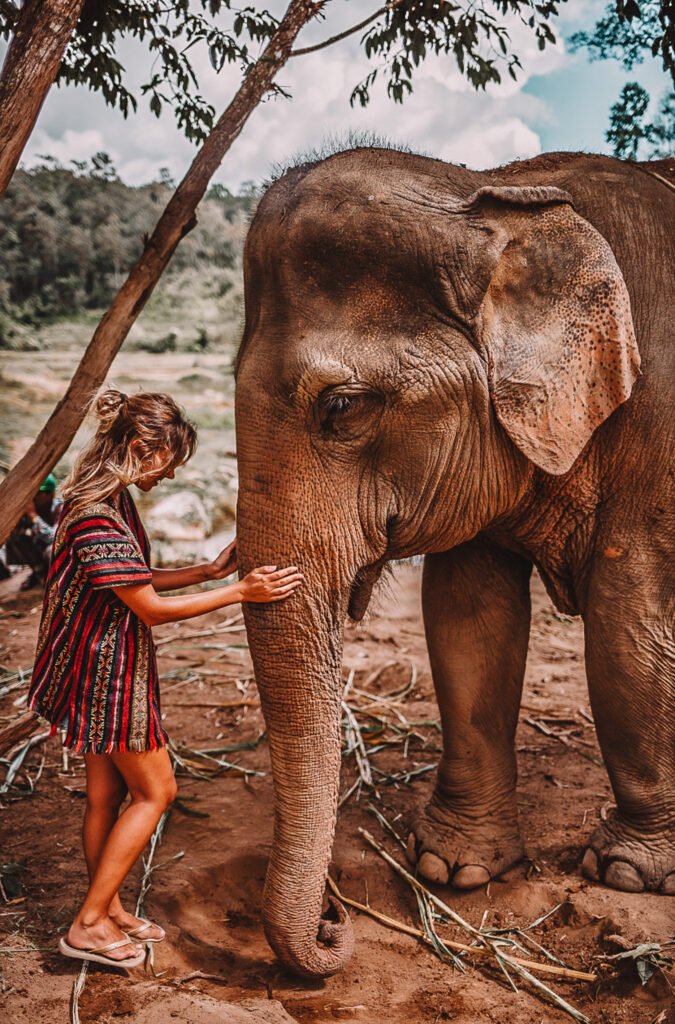
Look for places focused on animal care, not profits. Ethical ones don’t allow petting or tricks, and they give animals natural space. Check reviews and certifications (like GFAS).
These often involve painful training and stressful conditions to make animals “safe” for tourists. Avoiding them helps reduce demand for these practices.
Try national parks, real sanctuaries (no riding or petting), or wildlife tours where animals roam free – no cages, no tricks.
Your Choice
If you’ve made it to the end, thank you for caring enough to read through this guide. It’s not always easy to face the realities of animal tourism, but every choice we make as travelers can make a world of difference for these animals. By avoiding cruelty-filled attractions and opting for ethical, animal-friendly experiences, we’re voting with our dollars, supporting real conservation, and making a positive effect on the tourism industry, moving toward a future where animals are free from harm and exploitation.
So, as you plan your next adventure, remember: there’s always an ethical choice. Let’s keep the wild truly wild, the oceans safe, and all animals free to live as they were meant to.
Travel with heart, and let’s help animals one journey at a time. Let’s get lost together!
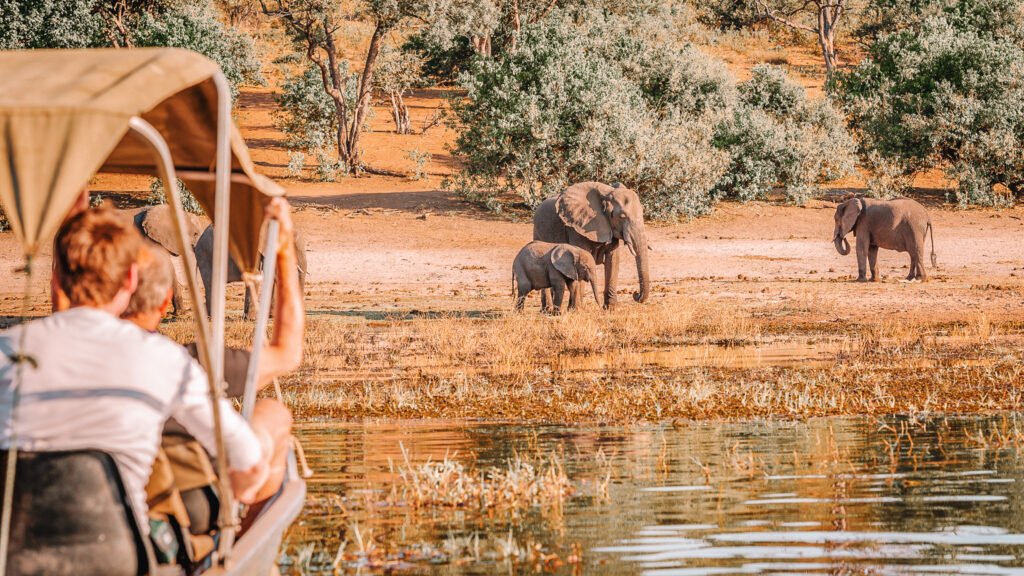




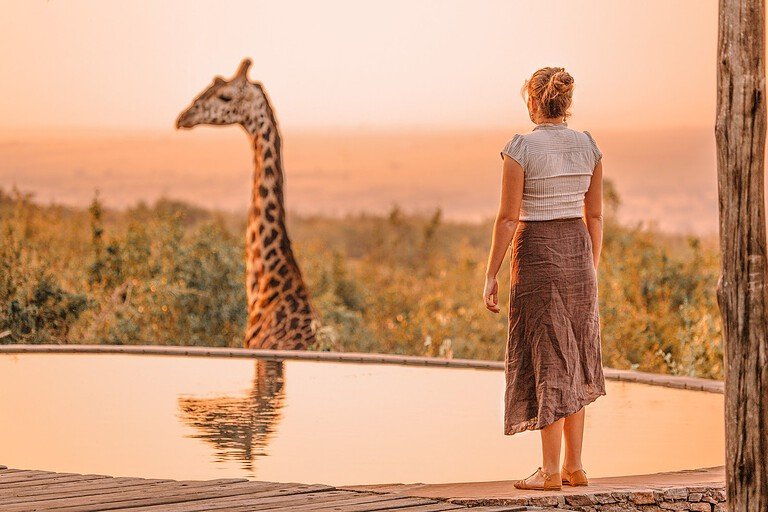
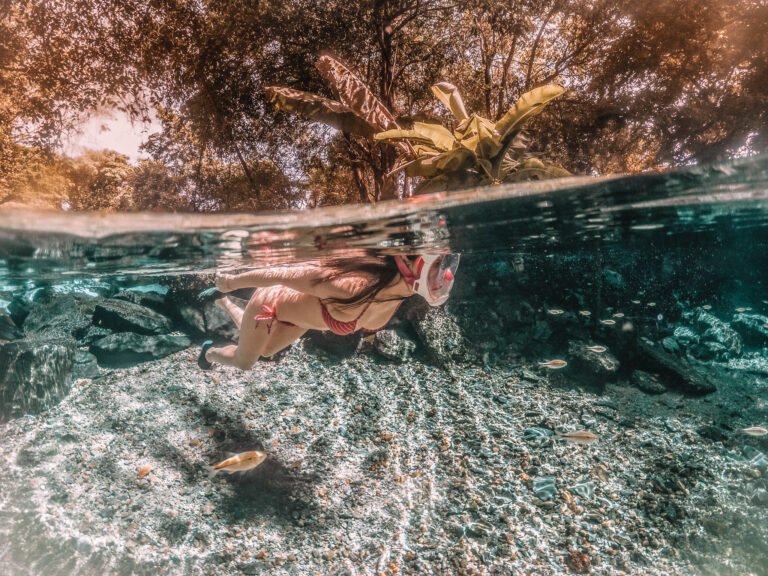
There are literally 100 ways to be an ethical traveler, there’s no excuse for abuse! Thank you for sharing & putting in the hard work here. This is an outstanding and comprehensive collection. Love your work and what you are standing up for.
Totally agree, Josh – being kind and responsible while traveling should be the bare minimum. Thanks so much for reading and supporting this message! Means a lot